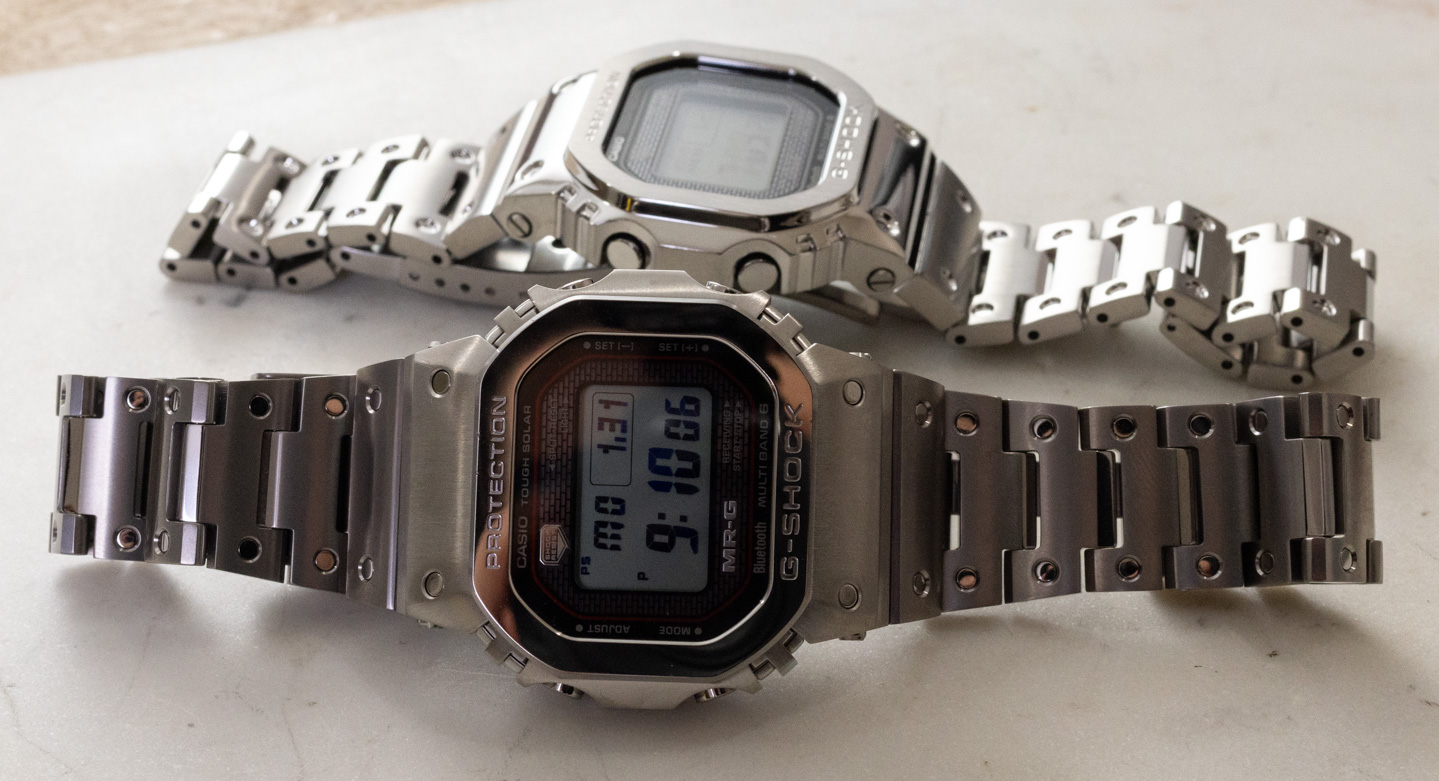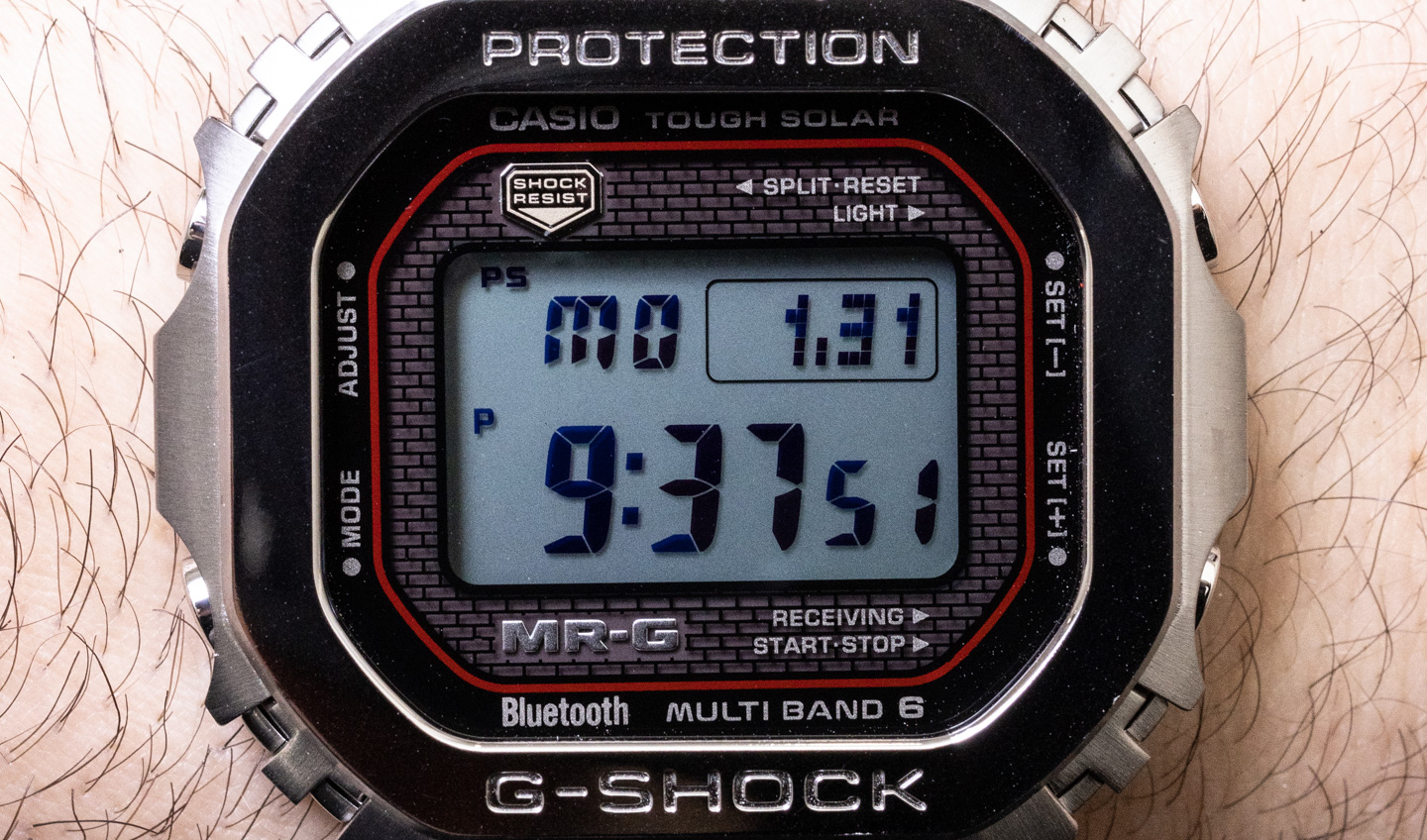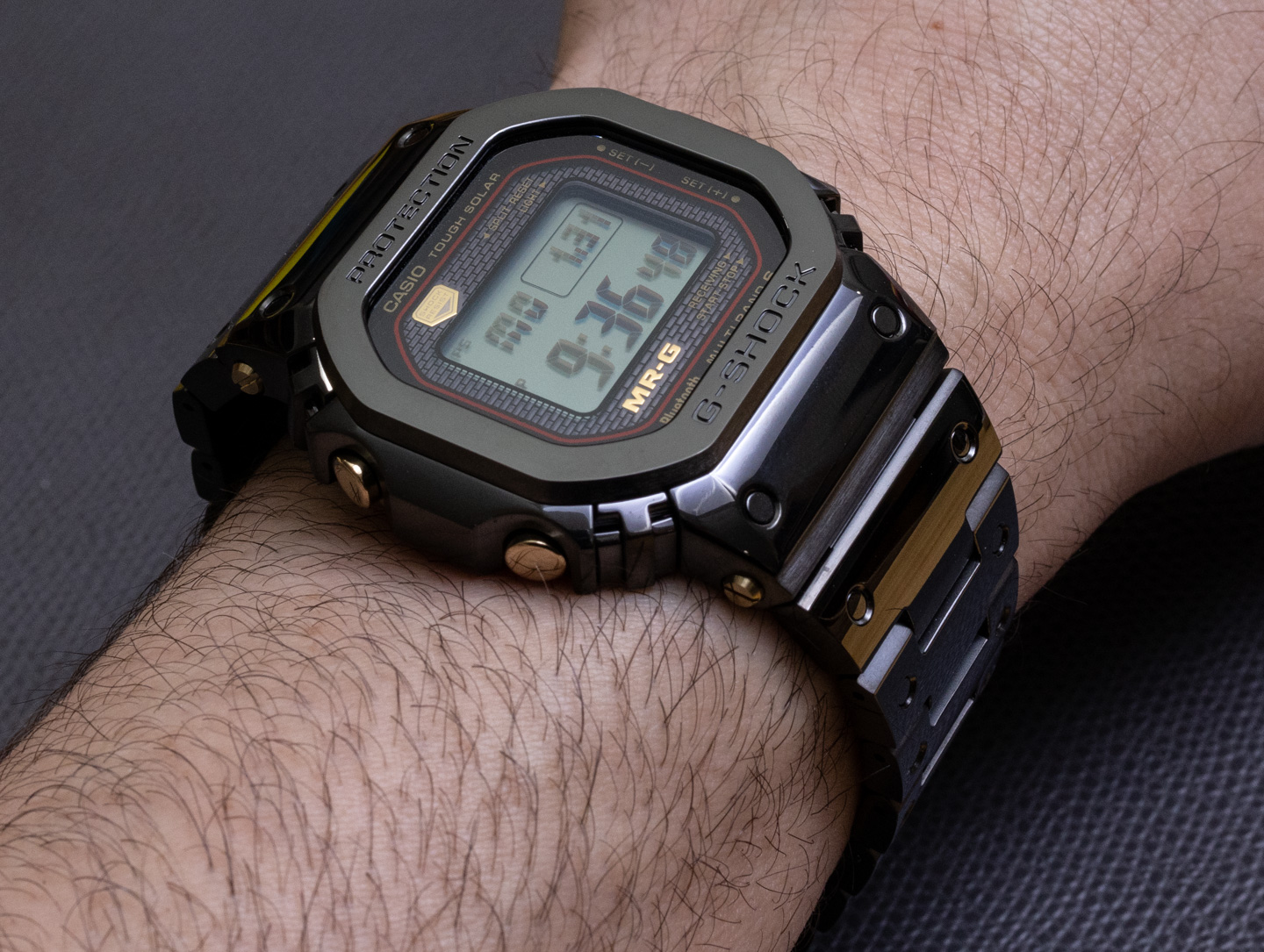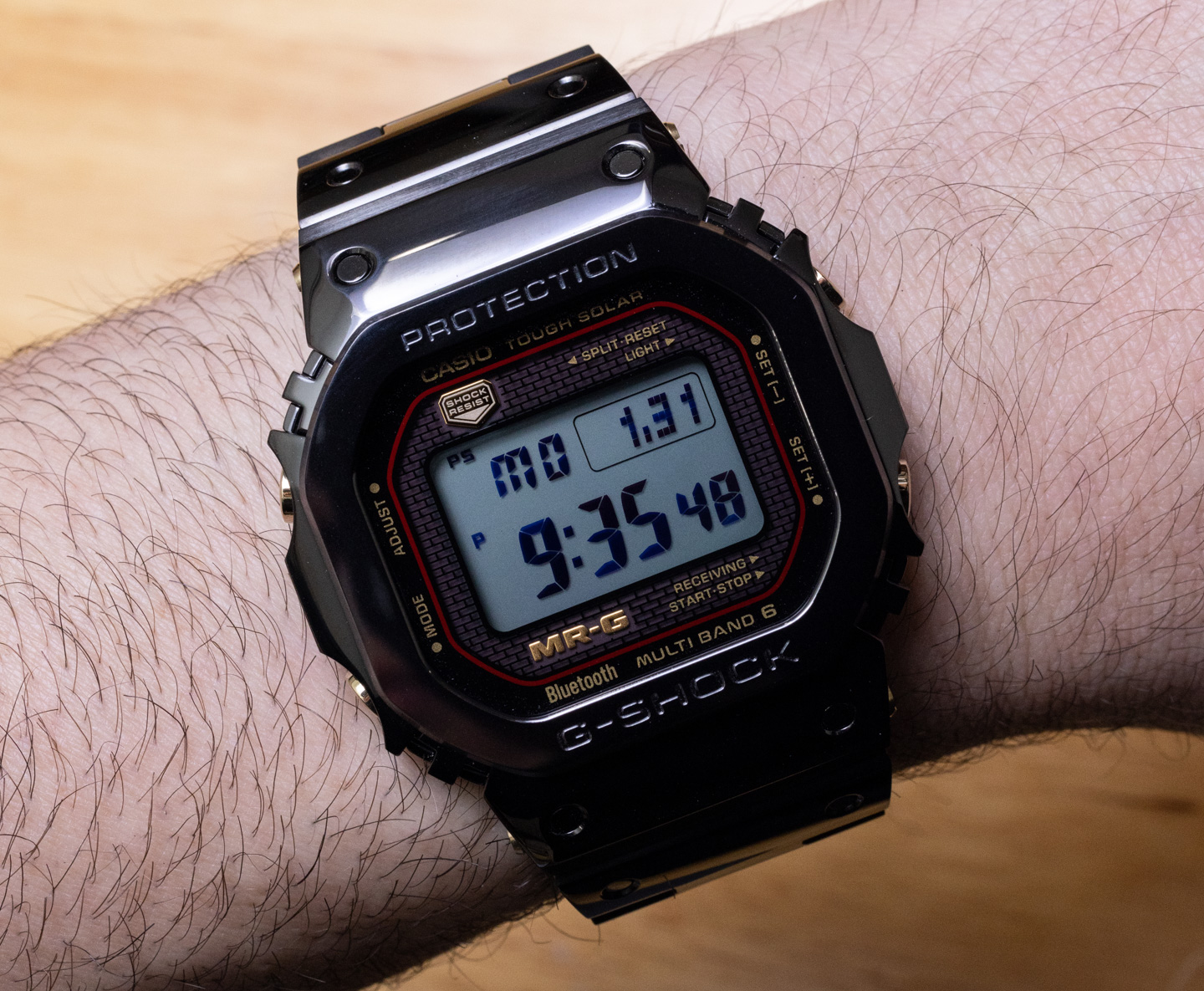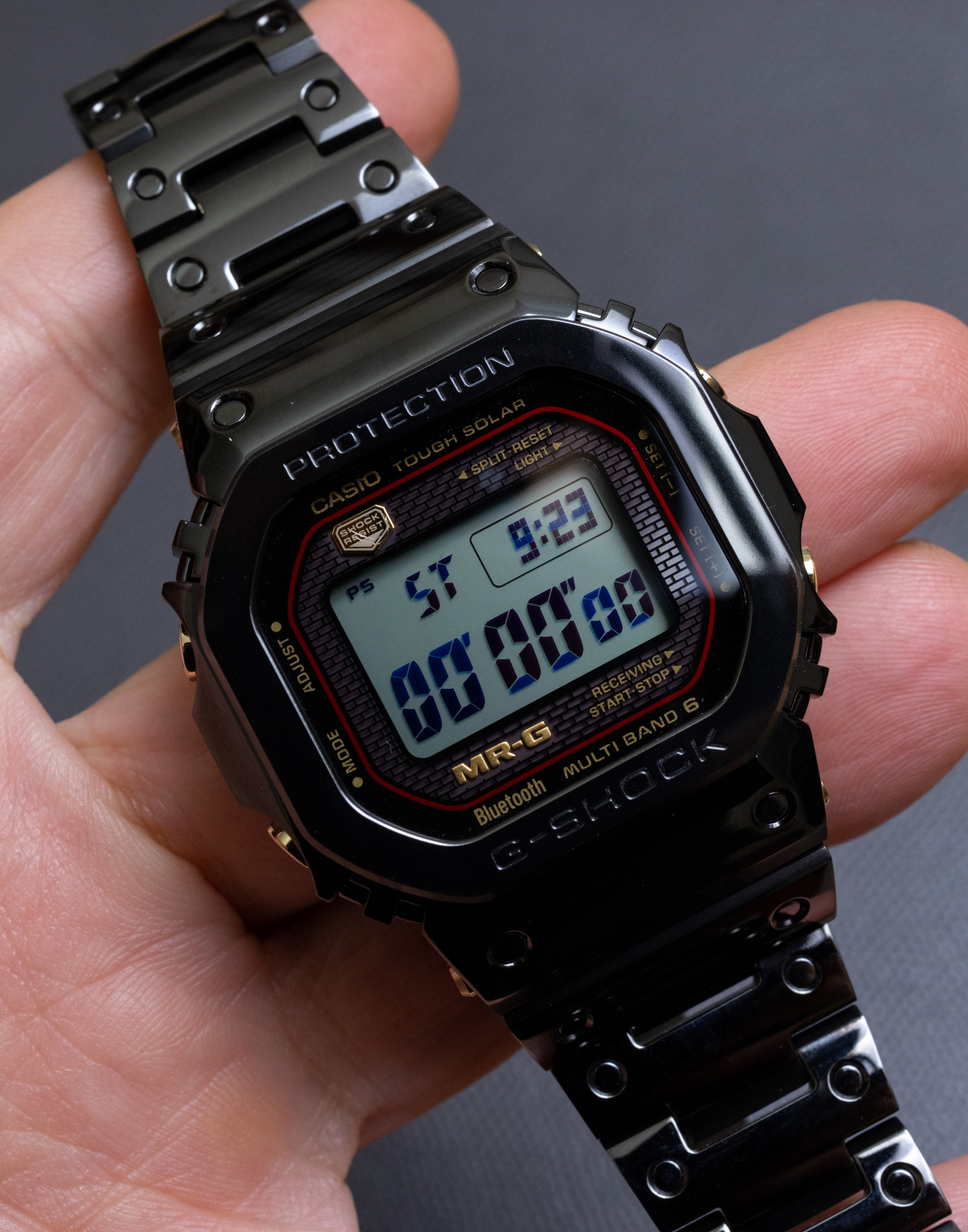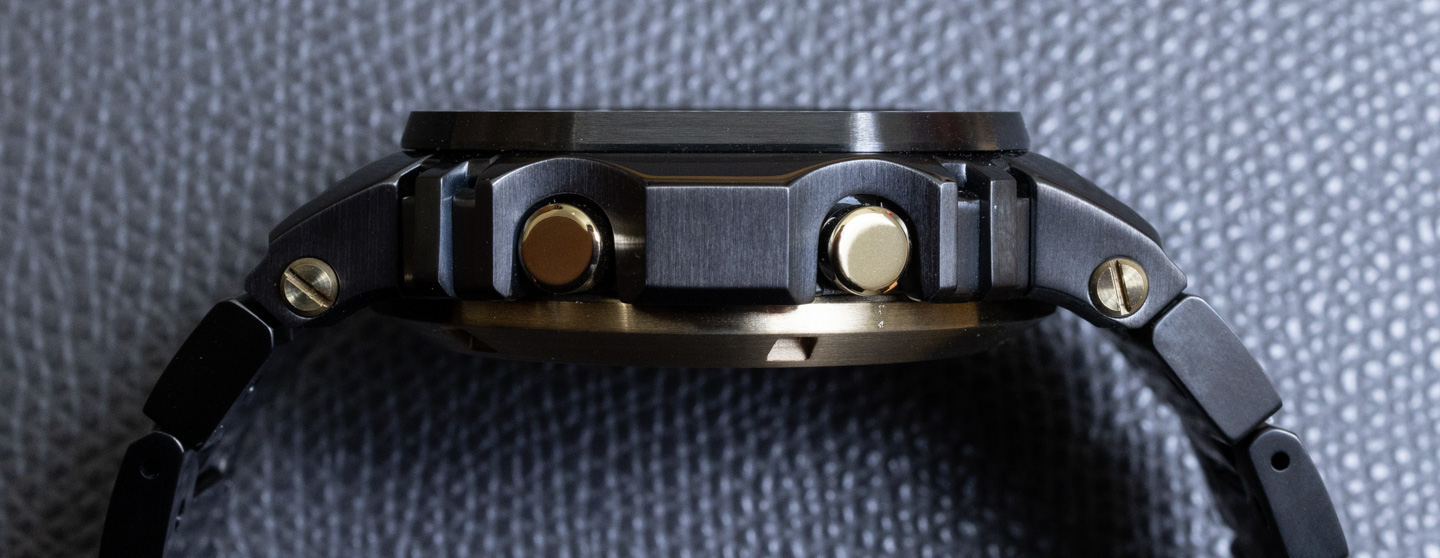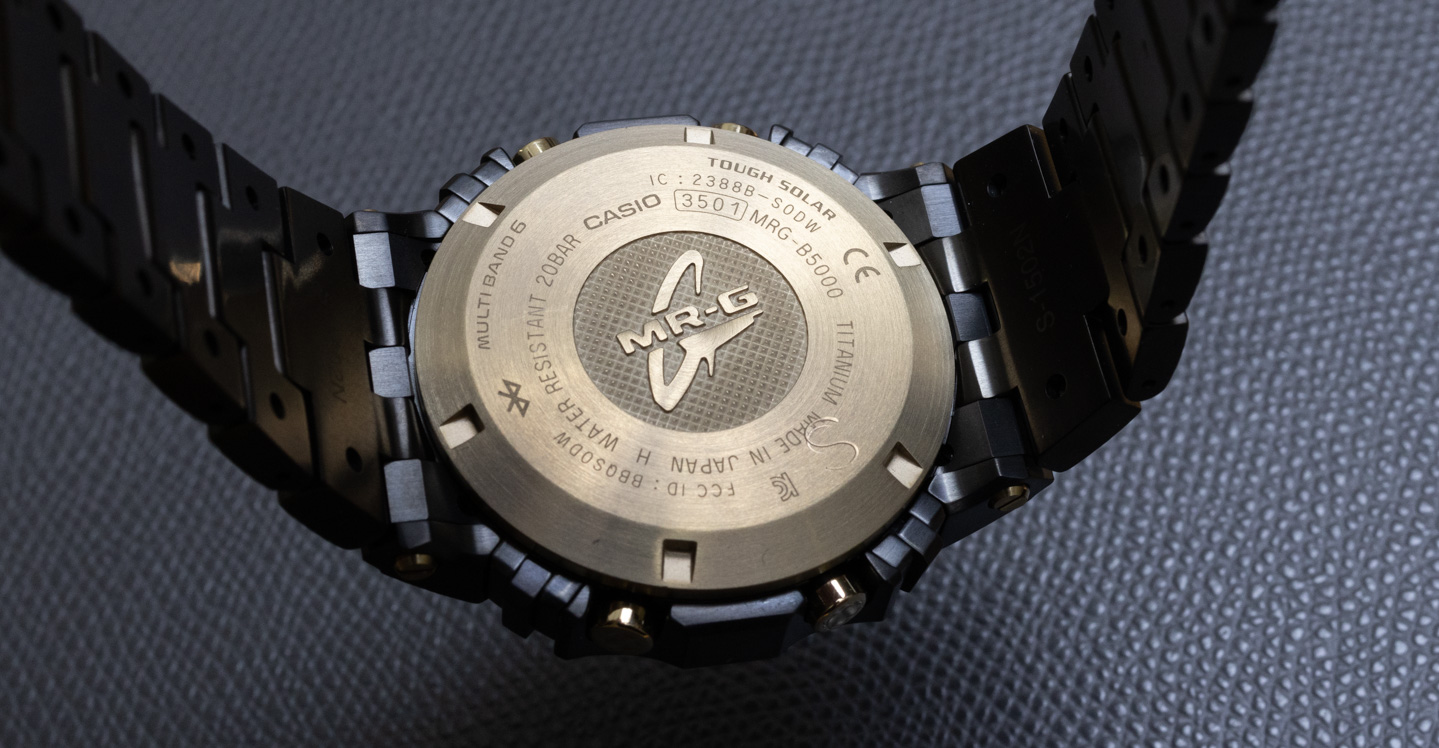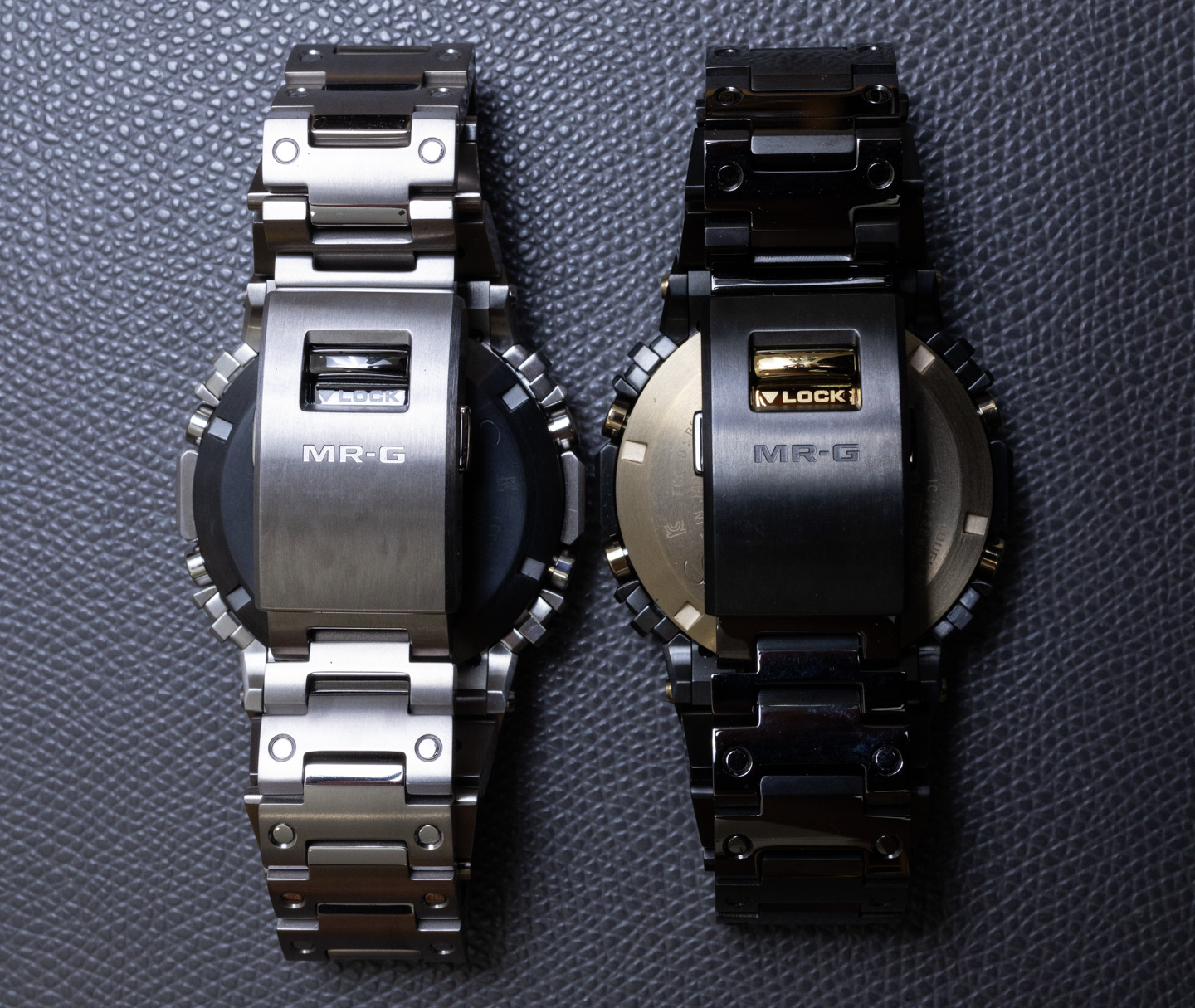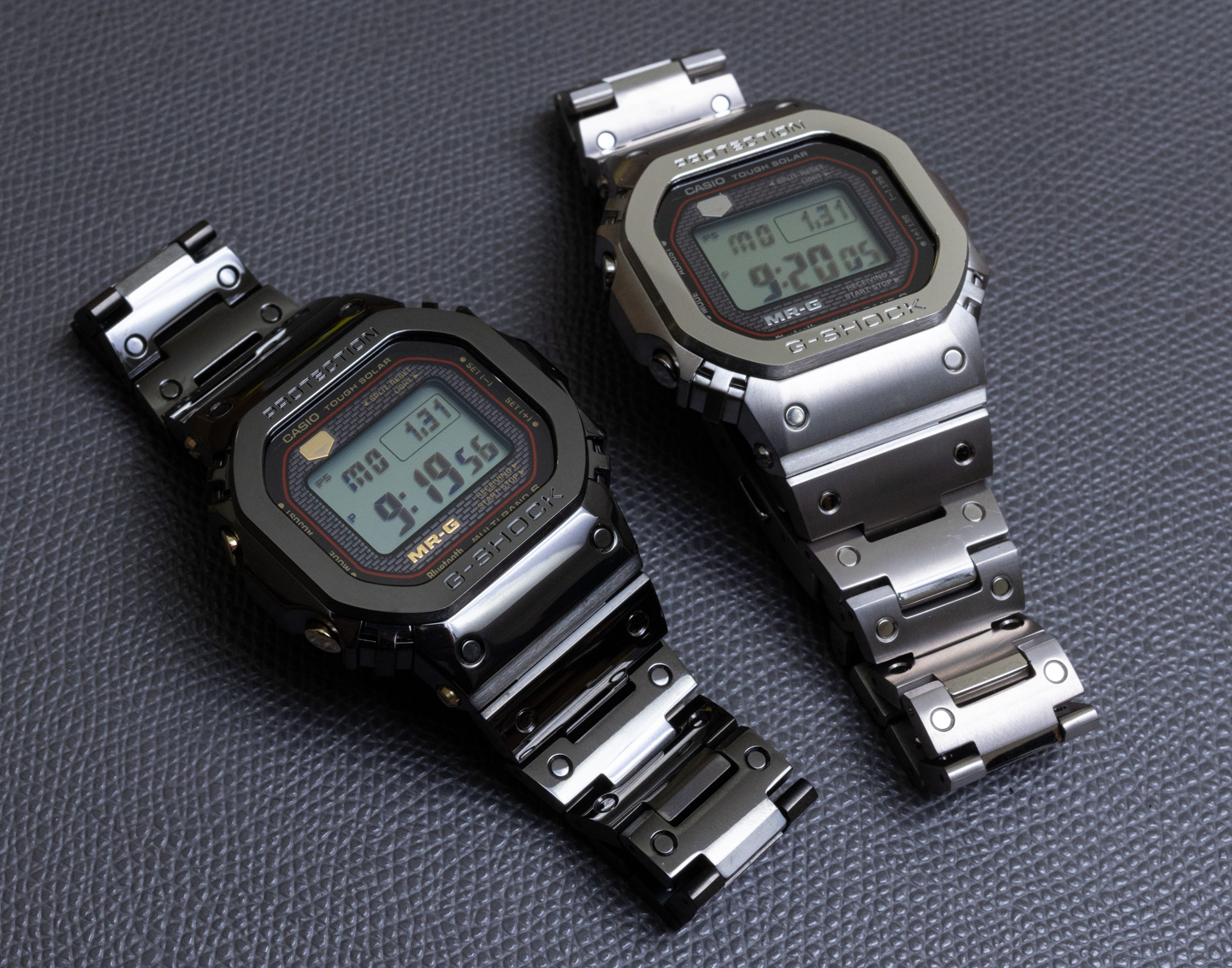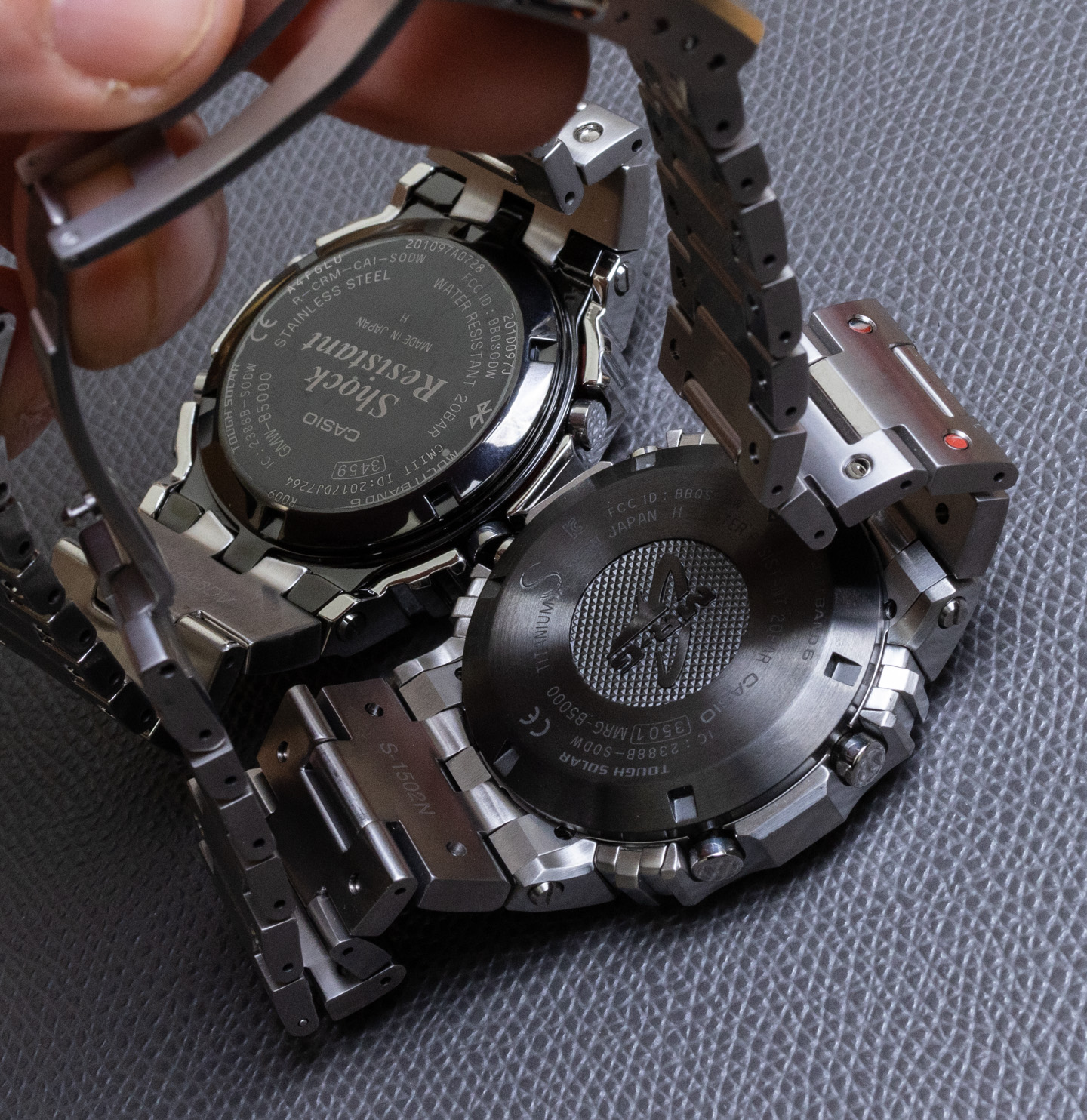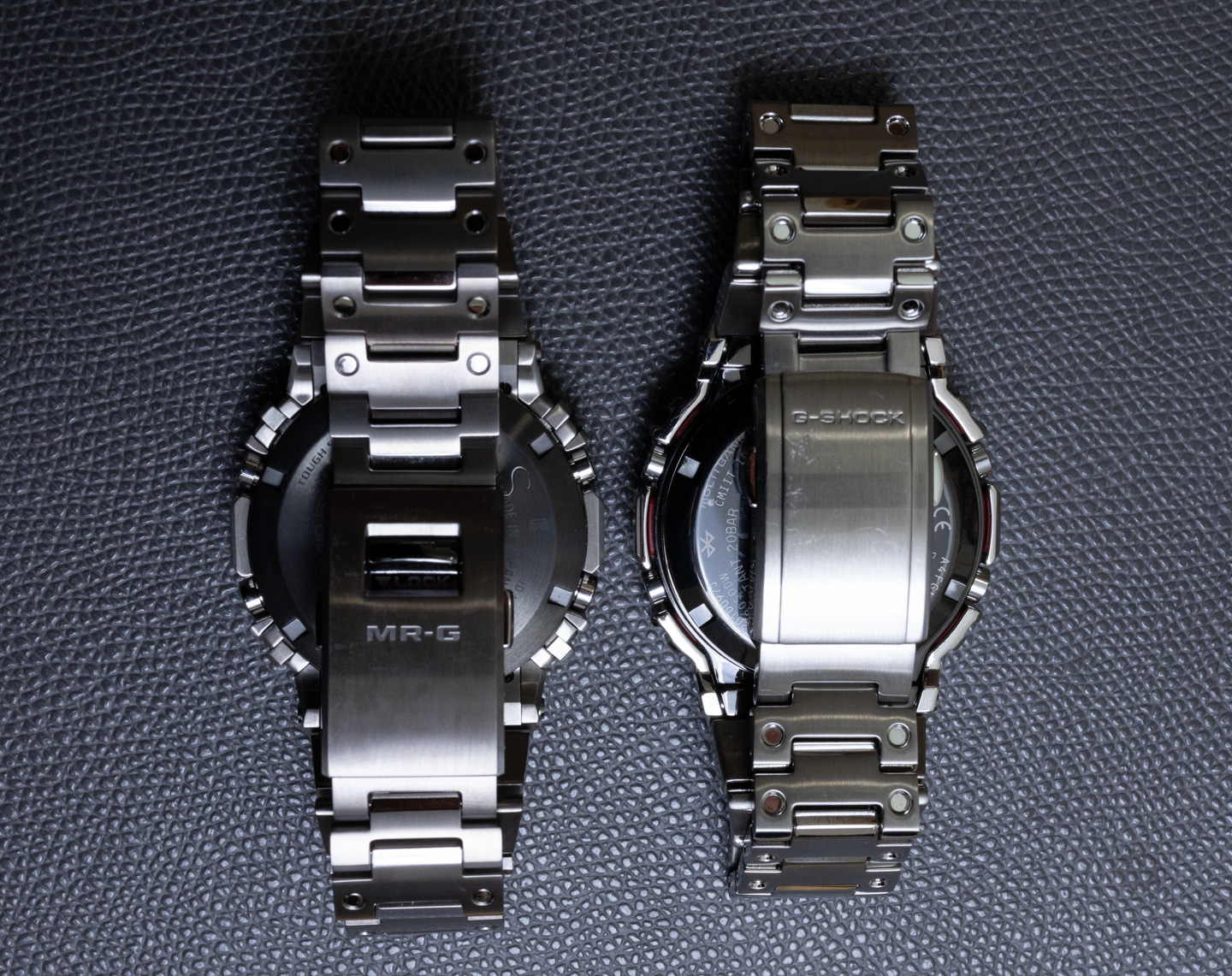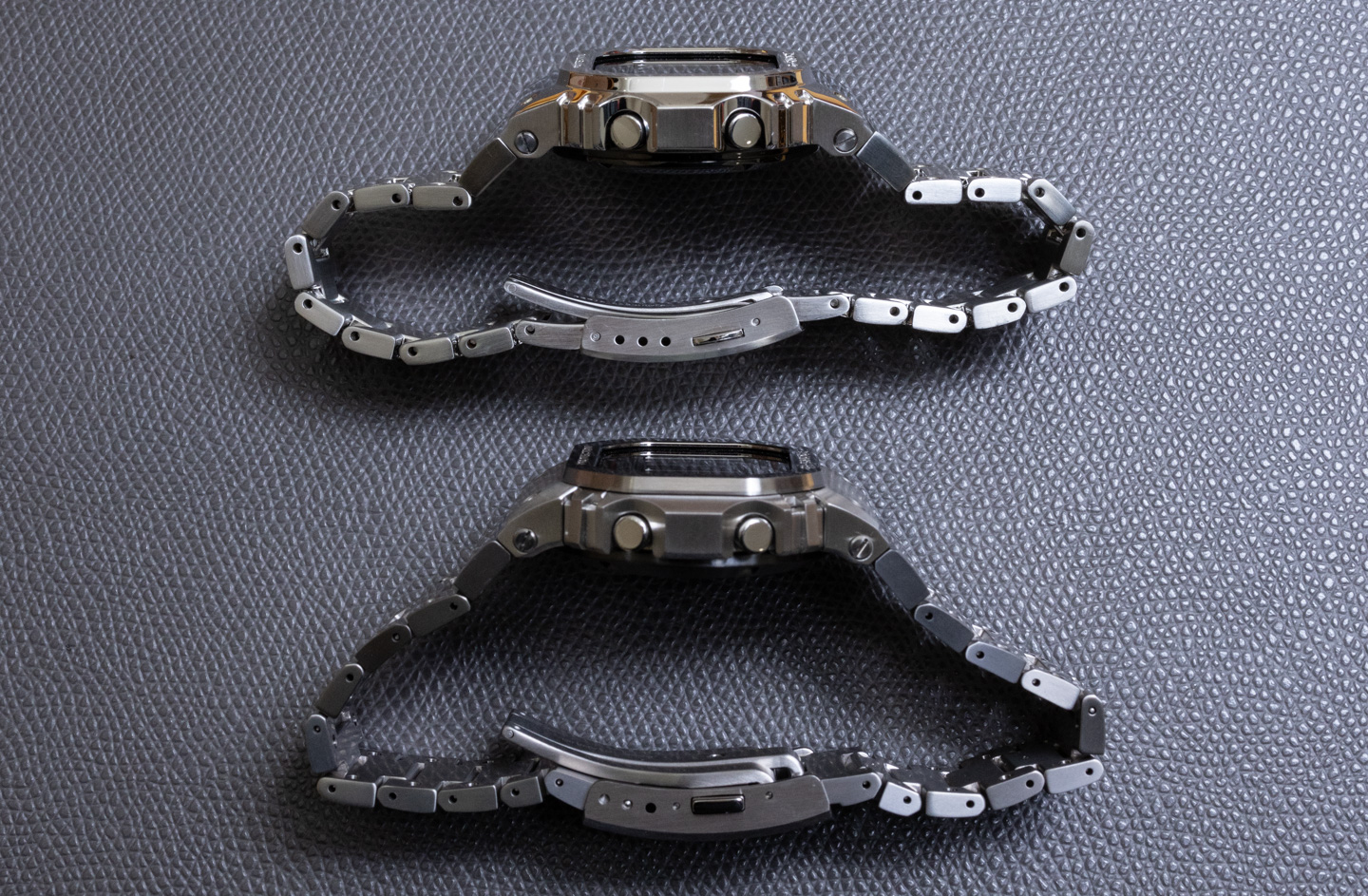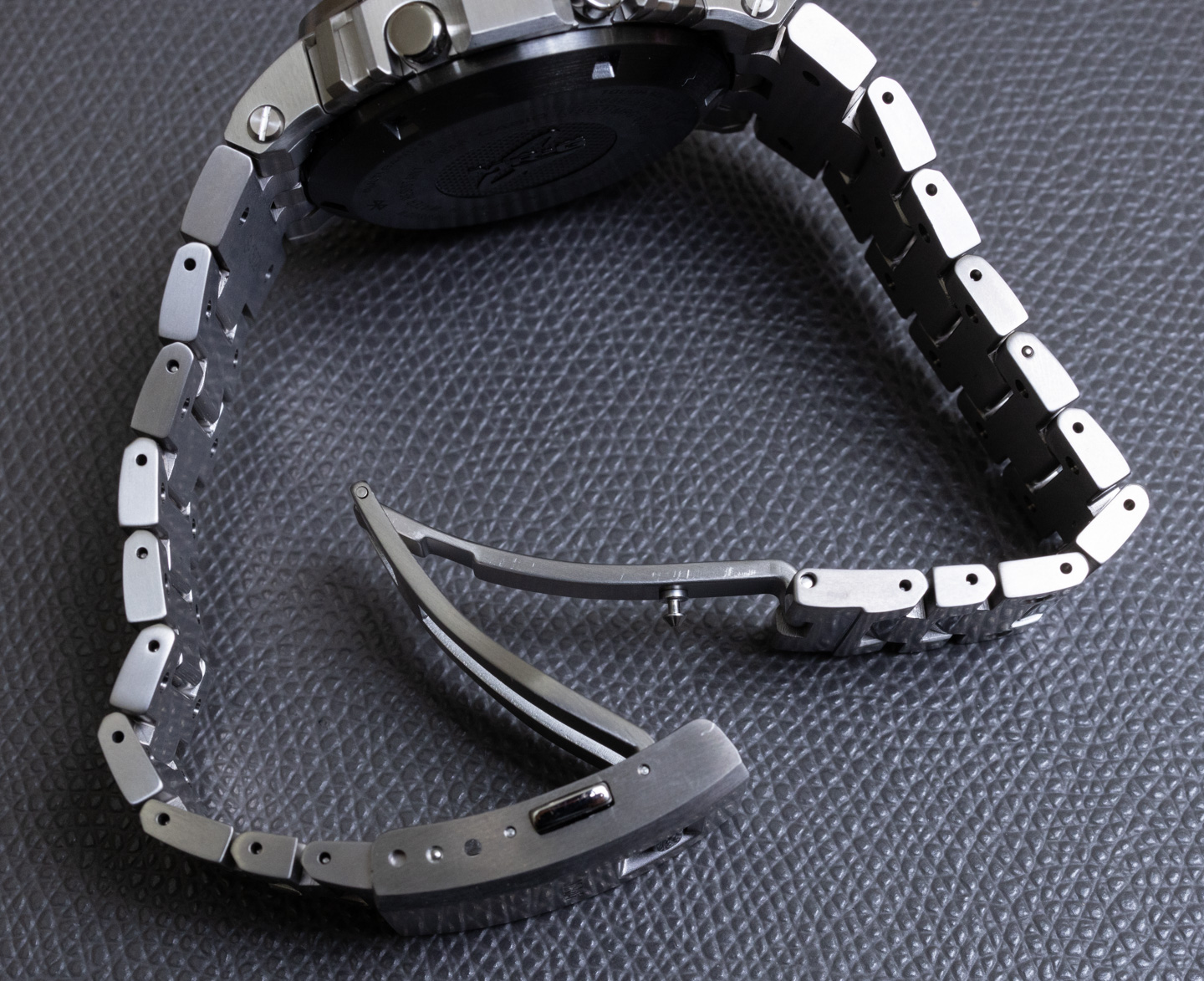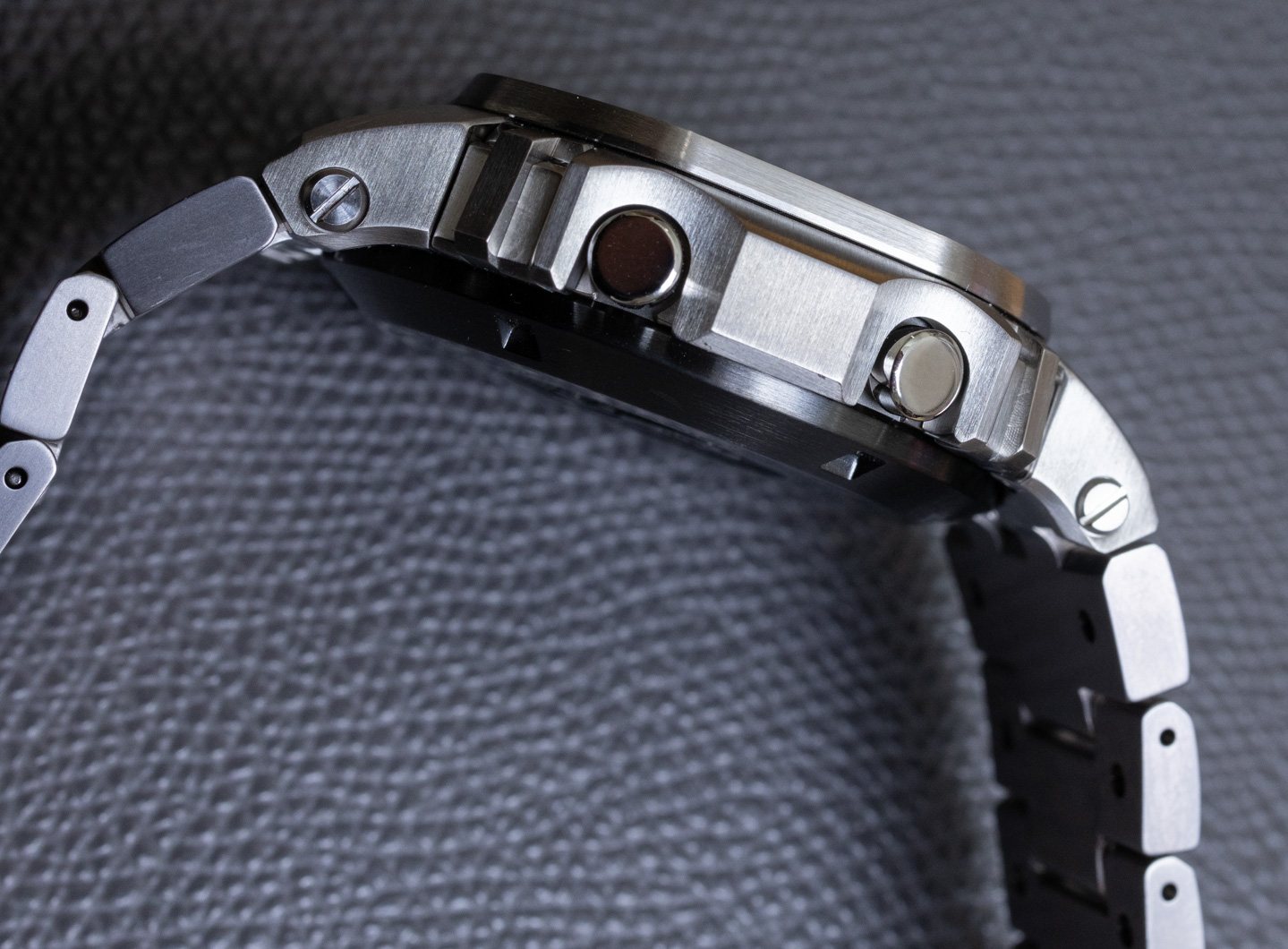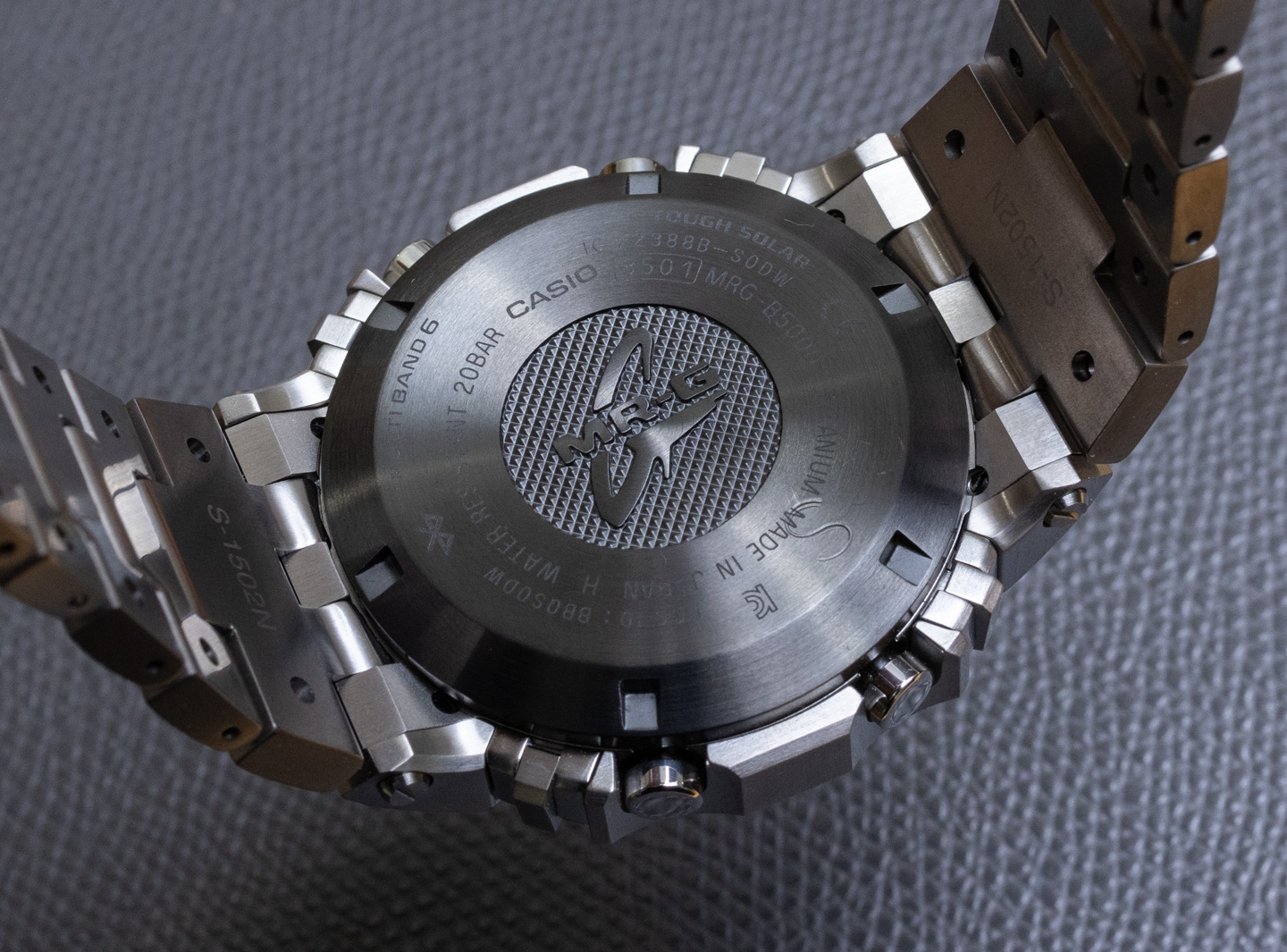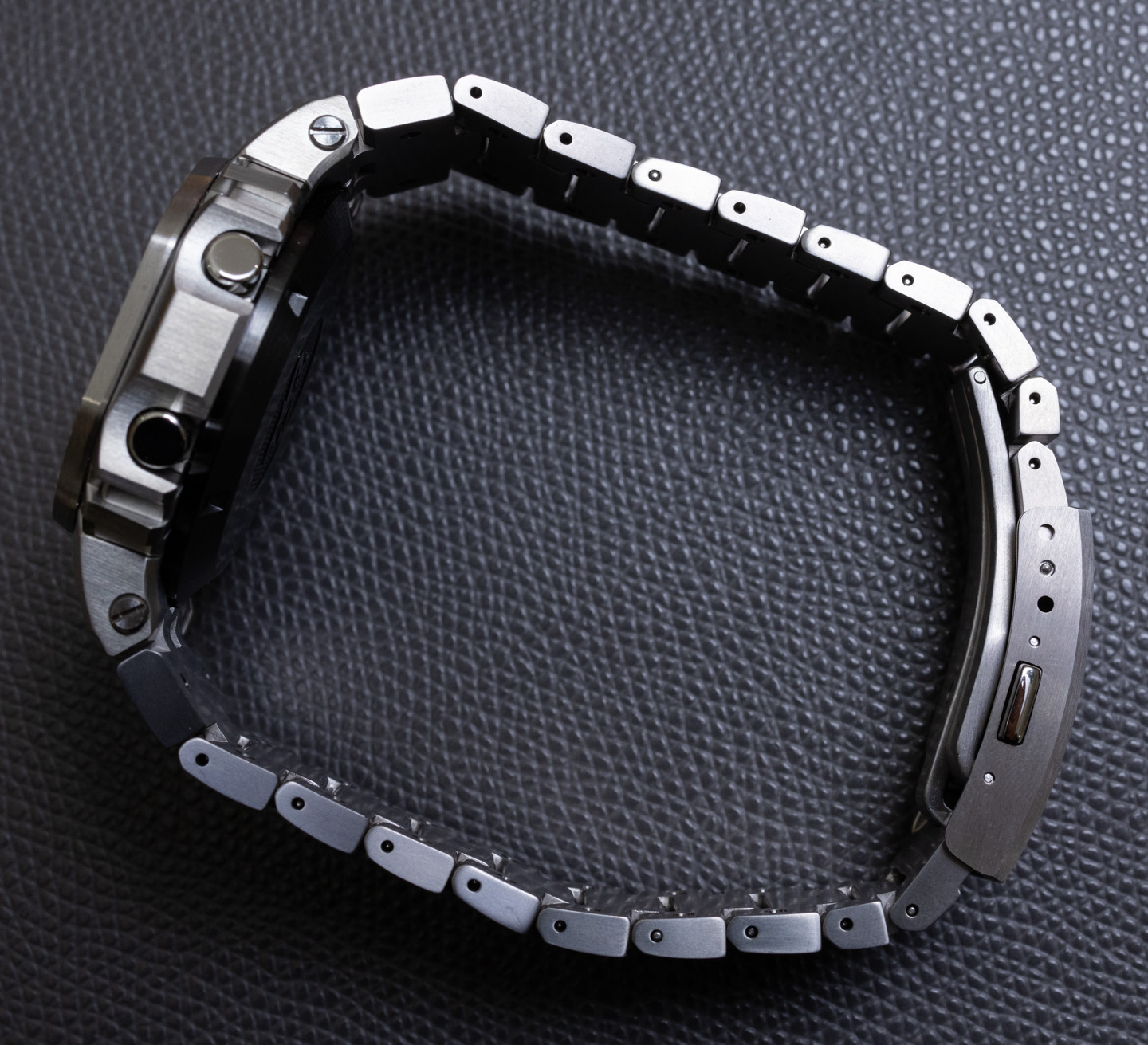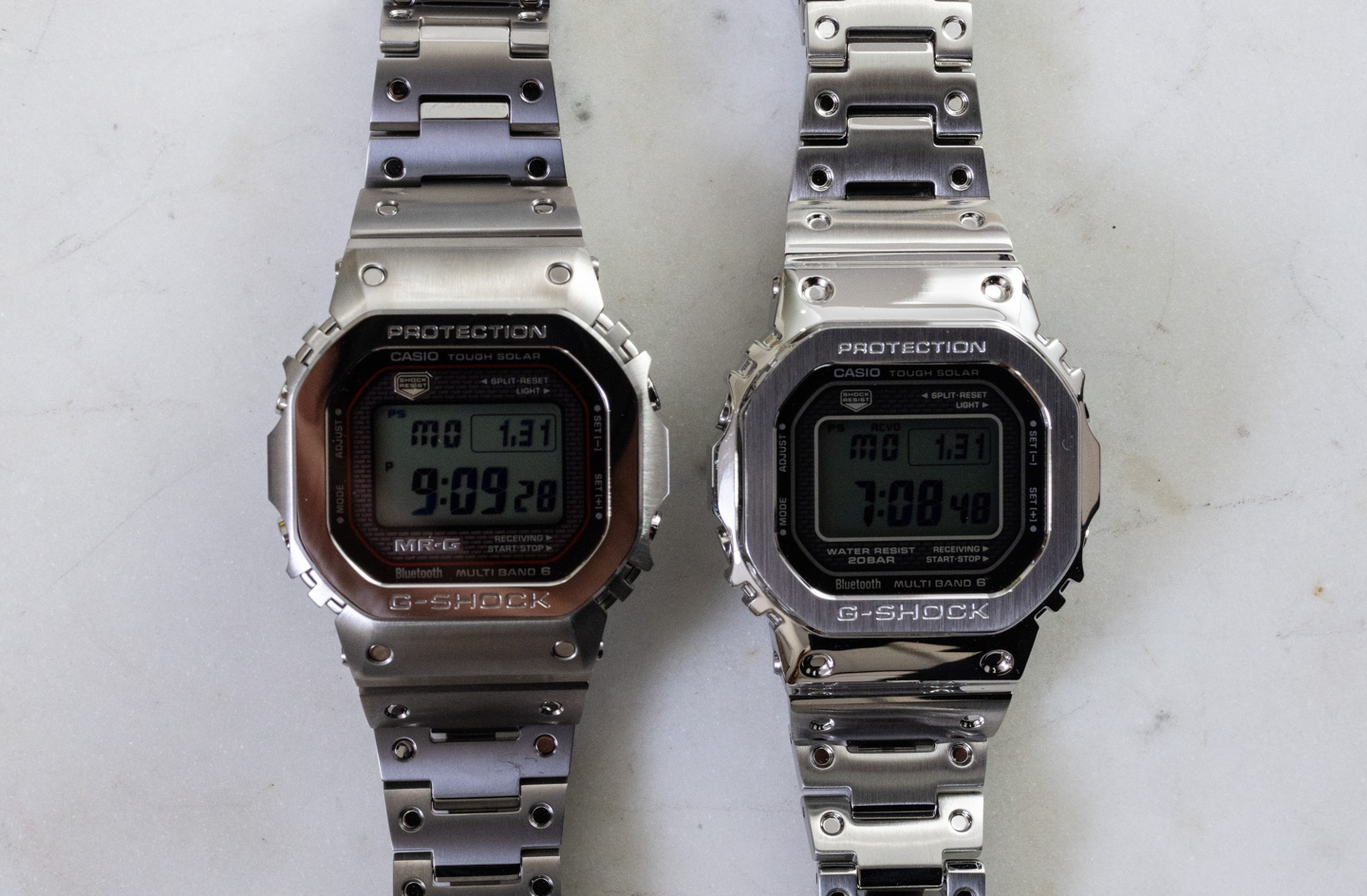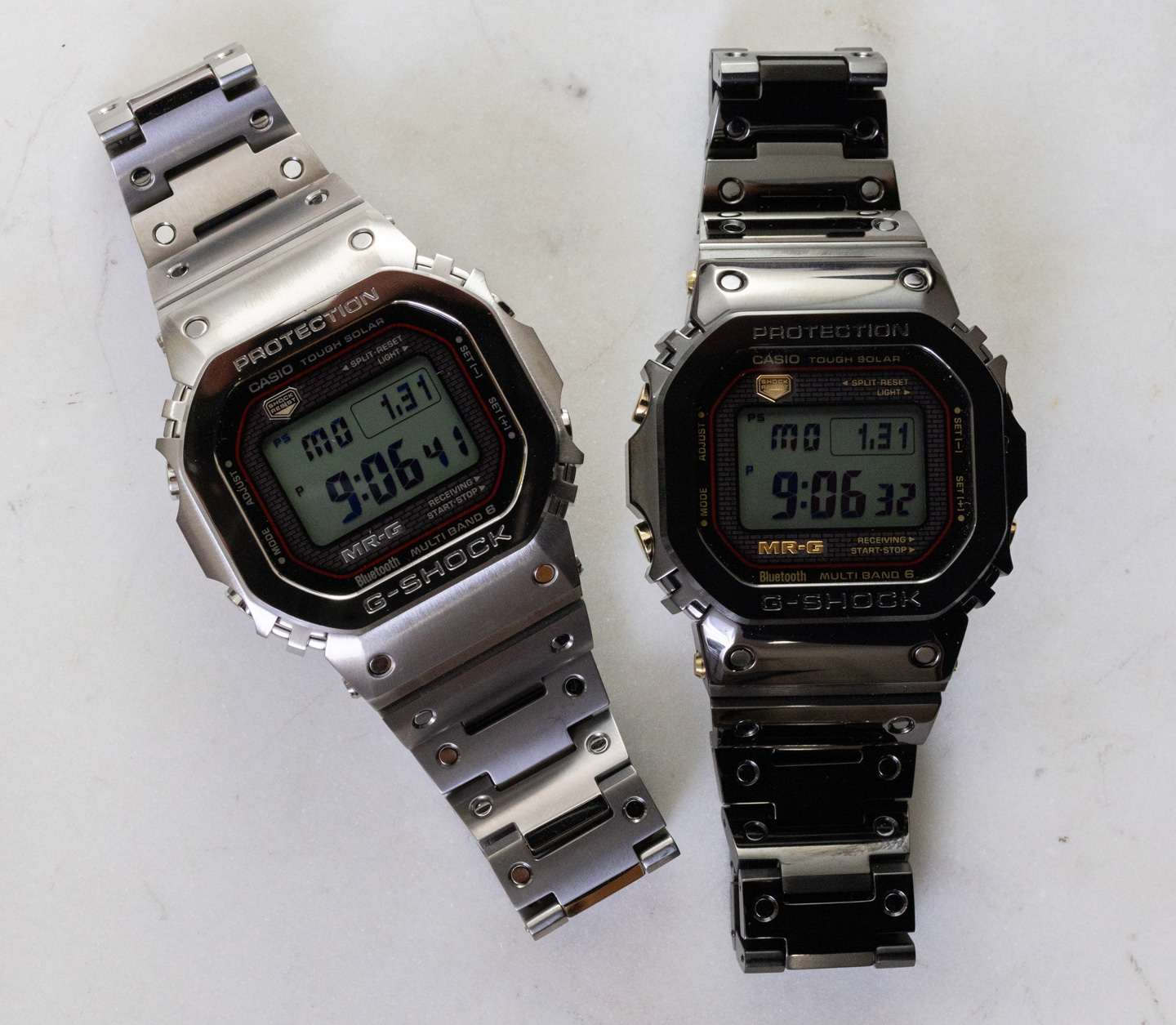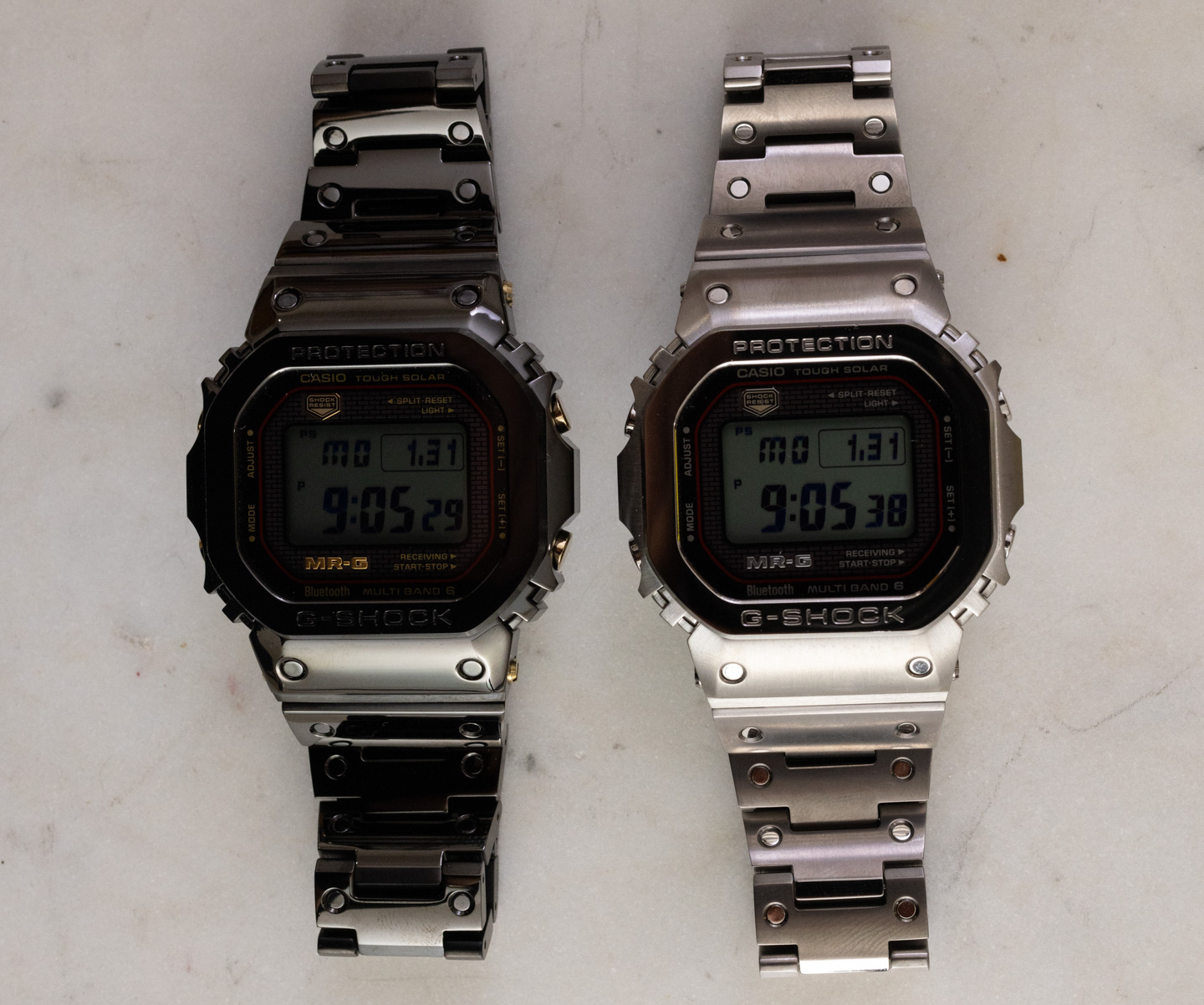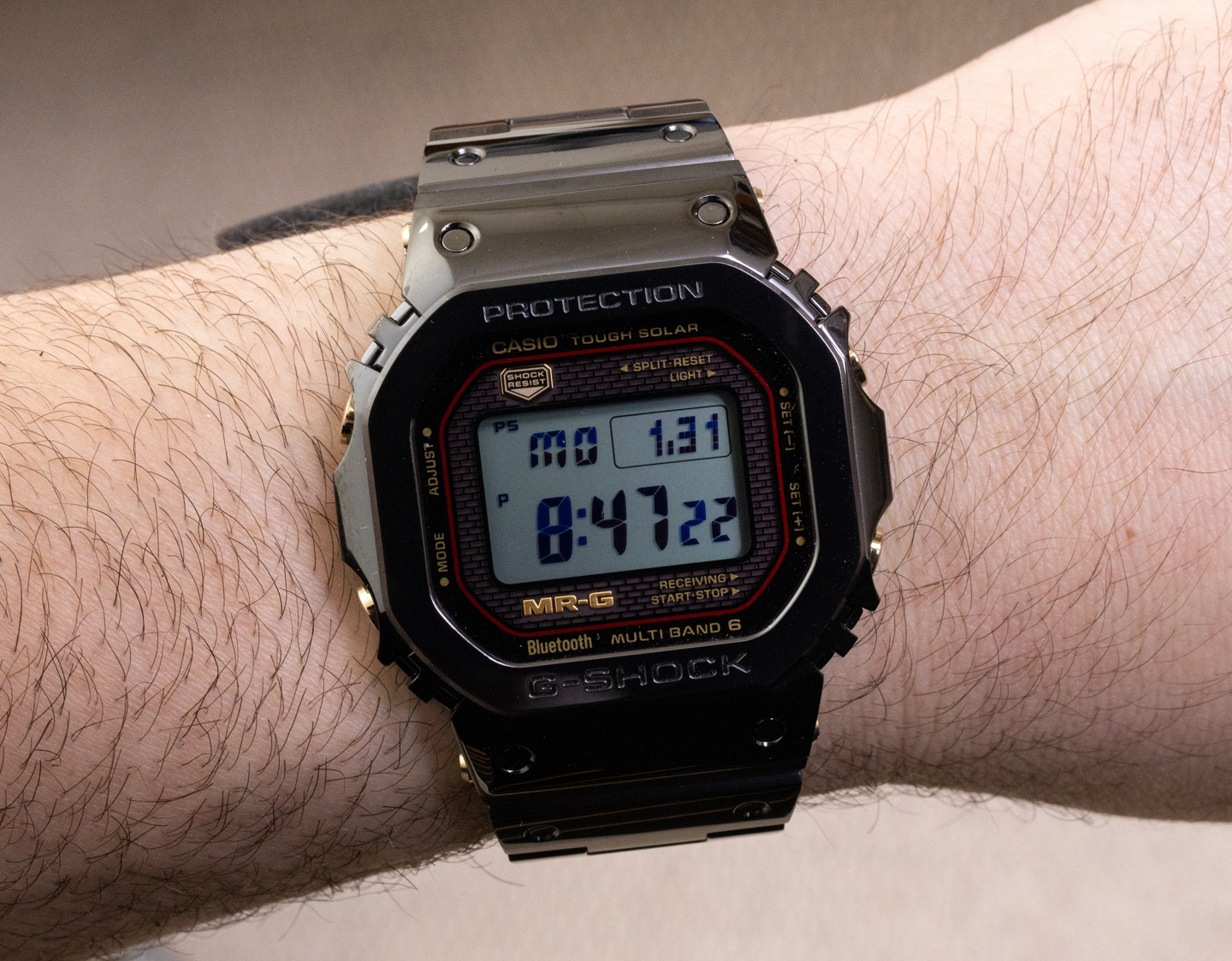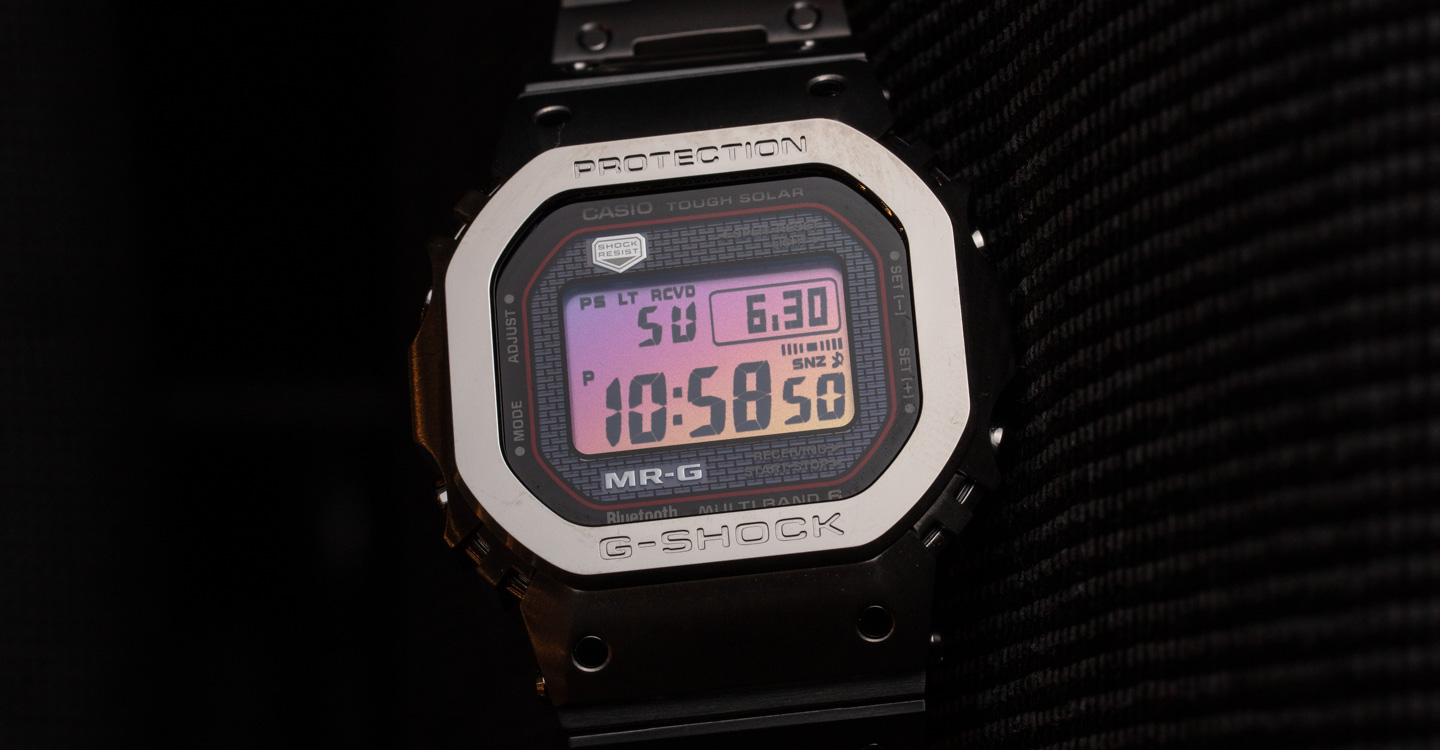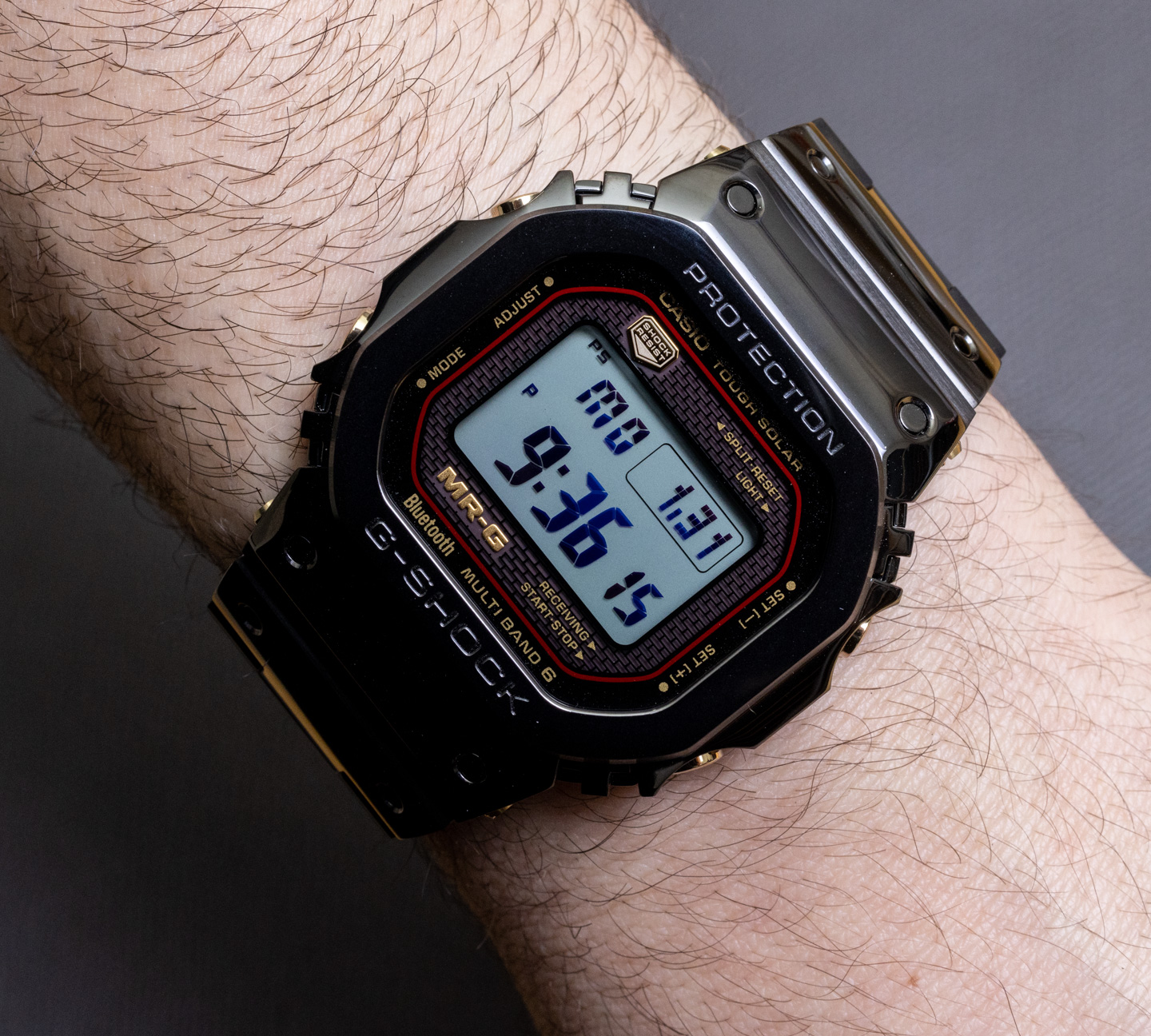
For 2022, Japan’s Casio releases a rare high-end digital dial version of its lauded MR-G collection of elevated G-Shock watches with the MRGB5000 family. There hasn’t been a digital member of the G-Shock MR-G watch collection since 1999, even though the original Casio G-Shock MR-G watch from 1996 sported a digital screen. MR-G watches (quite literally “Mr. G,” as in a mature, adult version of G-Shock products) started out as a more sophisticated way to enjoy the durability and reliability of G-Shock watches with formal or business attire. Since then, Casio has used the MR-G product family as a playground to experiment with novel artistic techniques and sometimes even materials. See, for example, this previous Casio G-Shock MR-G watch we checked out hands-on at aBlogtoWatch here. With the MRGB5000 models, Casio has (for now) gone in a different direction with the MR-G concept, making a “super G-Shock” version of the now-popular favorite GMW-B5000 (GMWB5000) that aBlogtoWatch has covered on numerous occasions.
Like all G-Shock MR-G watches, the MRGB5000 timepieces are a niche delicacy for those who appreciate what Casio engineers were going for and why paying several times the price of even the most high-end G-Shock makes sense for a consumer. Mind you that compared to Casio’s recent analog dial MR-G watches, the digital dial MRG-B5000 pieces are a relative bargain. That said, these are around $3,000 more than the steel-cased GMWB5000 watches they are based on. And Casio is less concerned about everyone running out to get one of these watches (they tend to do fine in the market) and more interested in making sure that watch enthusiasts understand what makes a product like this more expensive than its standard G-Shock pieces and how this watch celebrates both its heritage and company strengths.
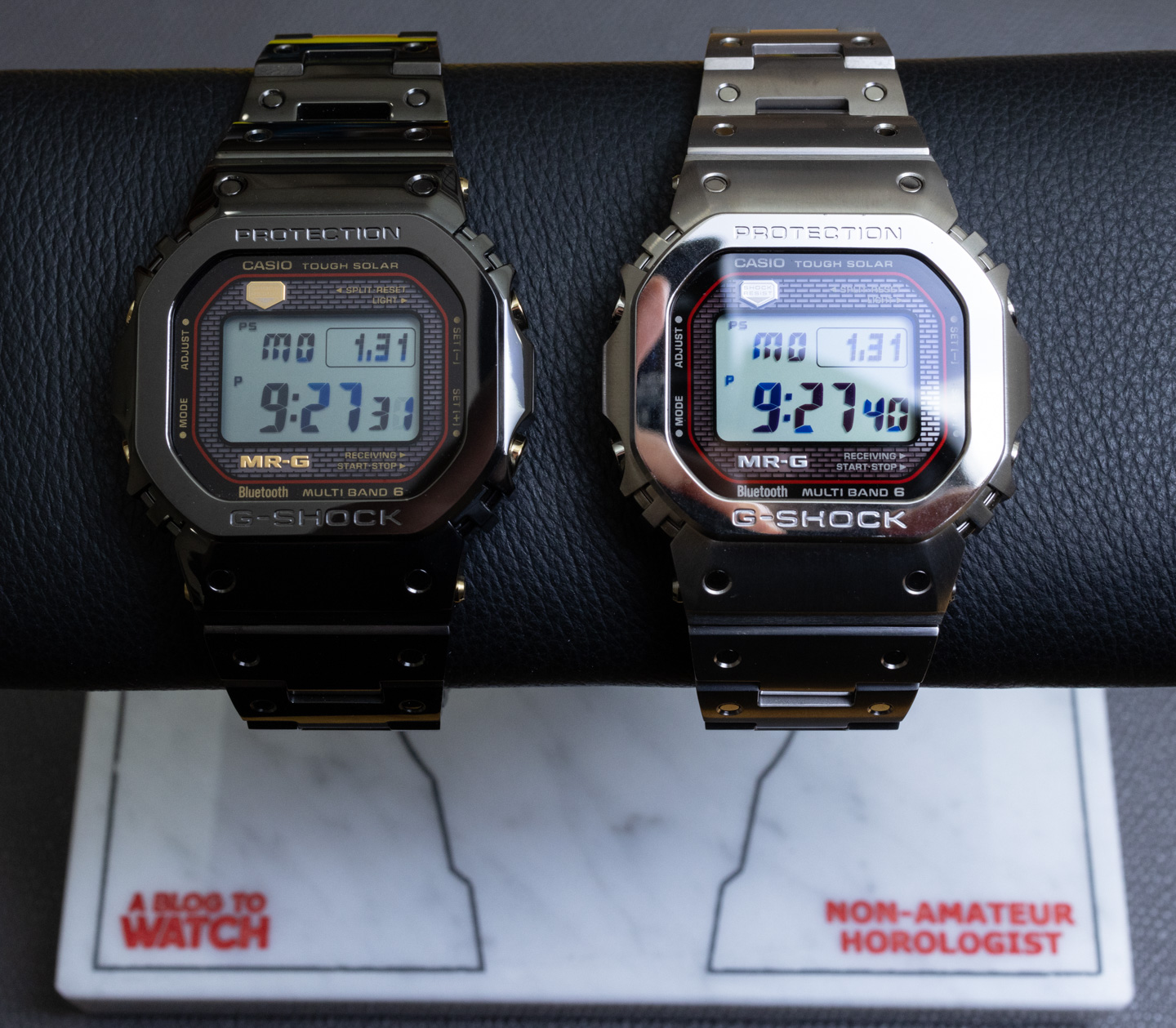
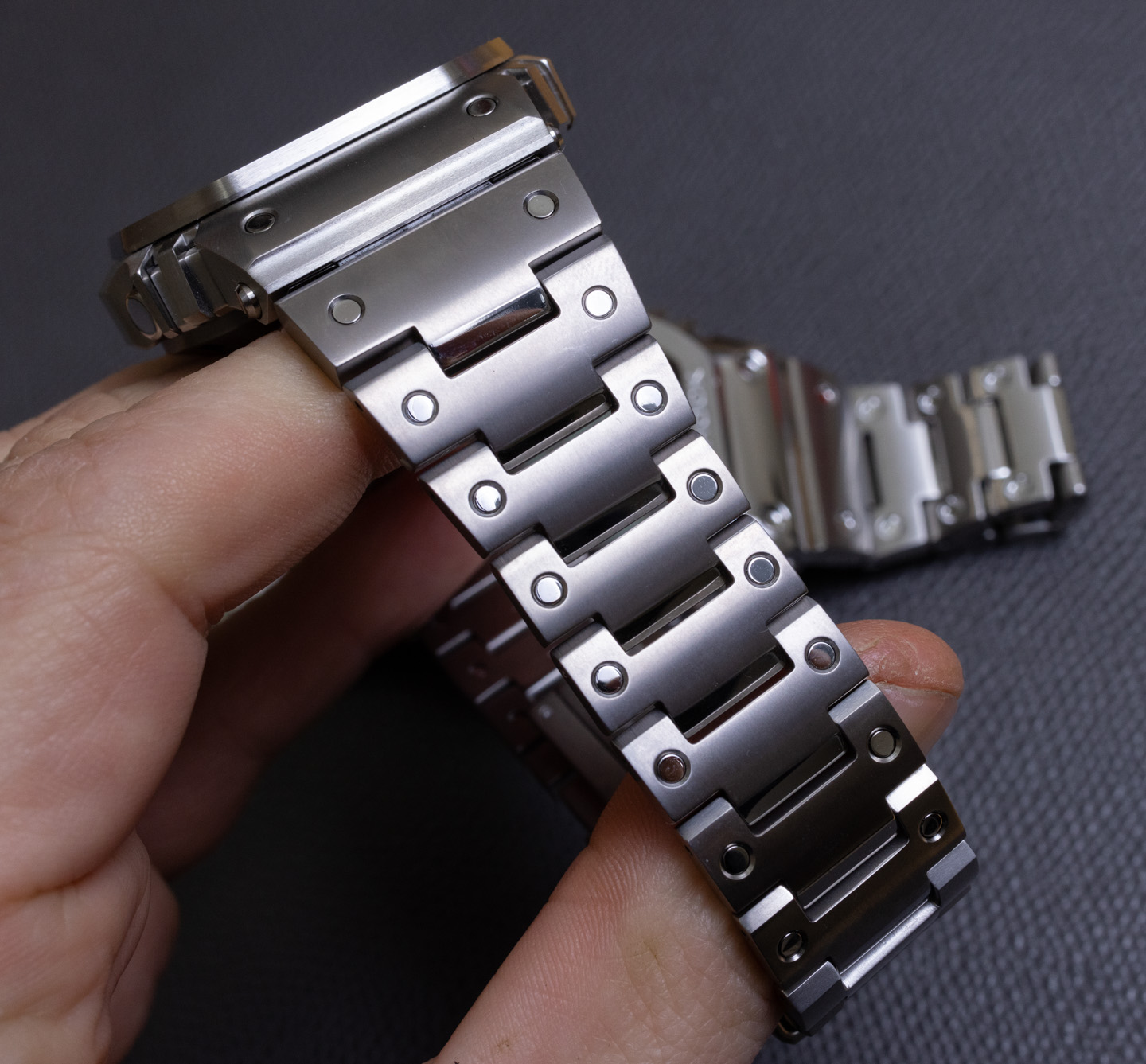
For comparison’s sake, I’ve photographed the MRG-B5000 watch alongside one of the GMW-B5000 pieces so that you can see how they are similar and different. In short, the MRG-B5000 case is produced from vastly more parts (more precision engineering/better looking), as well as from exotic titanium alloy materials that are not available in Casio’s standard production (even though there are some titanium versions of the GMW-B5000). If you hold the steel GMW-B5000 and the MRG-B5000 in opposite fists, you’ll notice how they both have a great presentation, but the MRG-B5000 is even more solidly built and yet weighs much less than its steel-cased relative. In terms of dimensions, they are more or less the same with the cases being just over 43mm-wide and 13mm-thick — very much a medium-sized G-Shock, which implies a high level of wearability for a variety of wrist sizes.
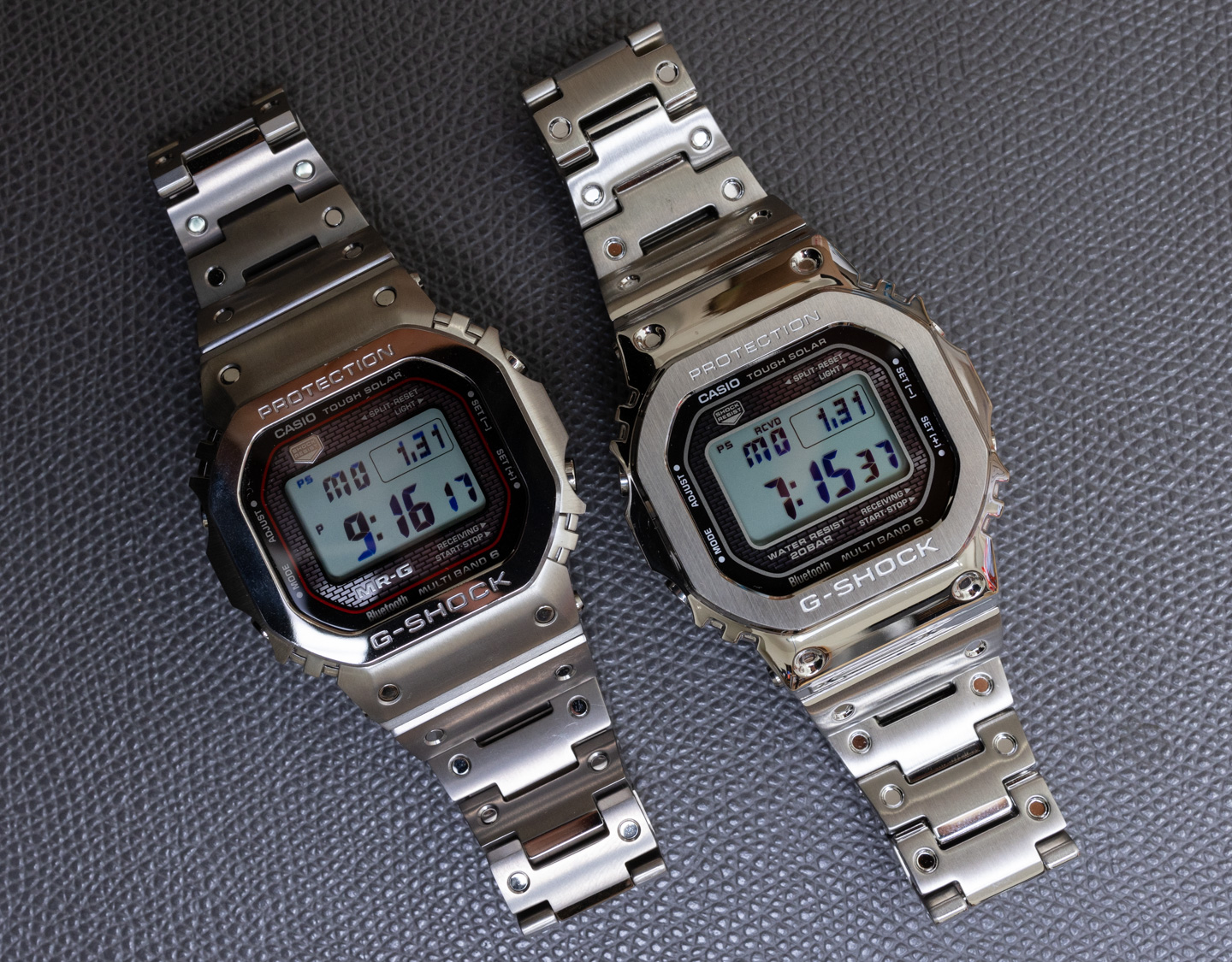
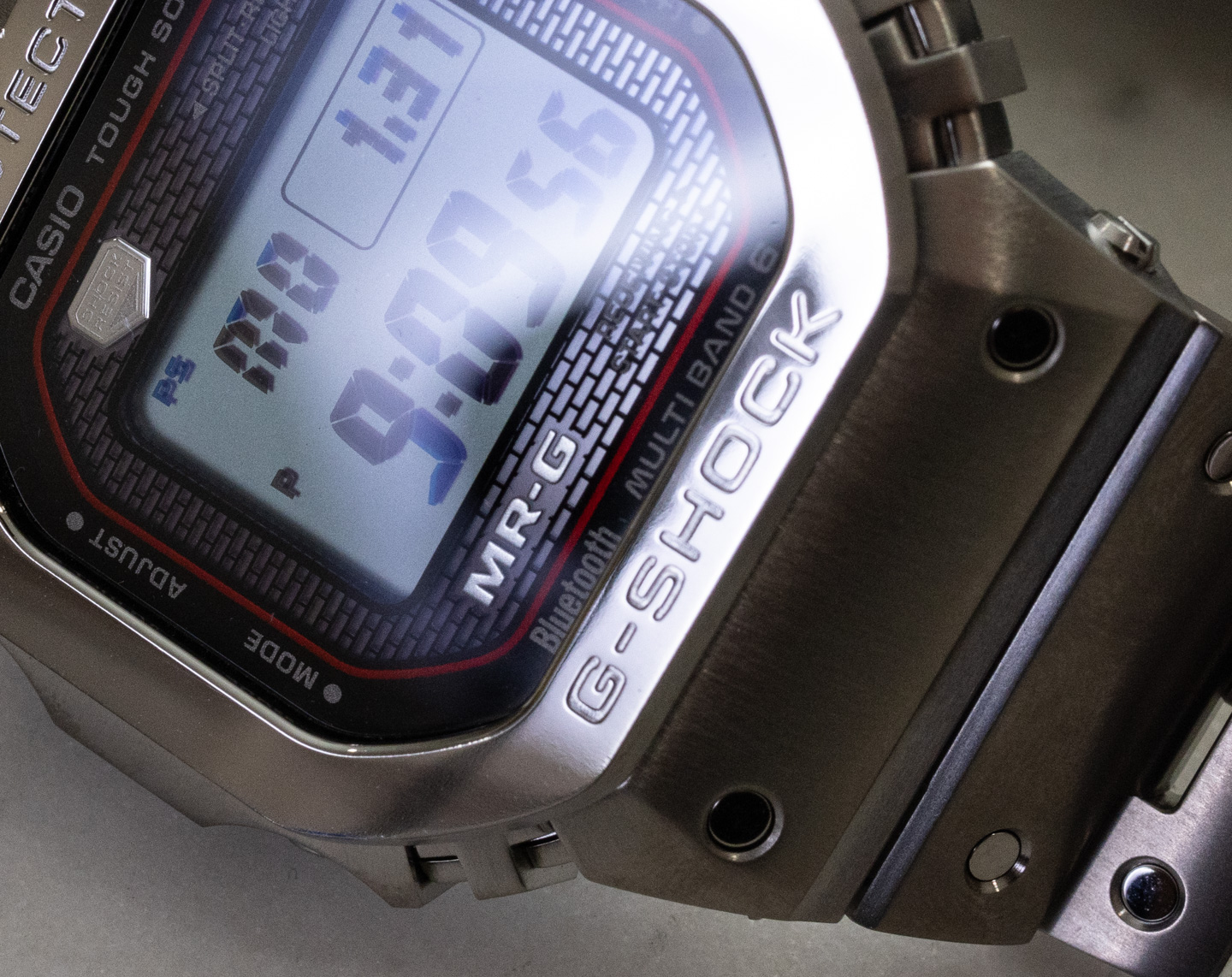
Overall, I think Casio did a brilliant job with the case and bracelet engineering of the MRG-B5000 watches that are represented in this article as the reference MRGB5000D-1A (“silver” tone) and the MRGB5000B-A1 (DLC black-coated version). The detailing is truly next-level for a Casio G-Shock watch, and I think those who appreciate details will be fond of what Casio did here. The only area in which I would have liked to see something extra in this watch is the module (which is what Casio calls most of its in-house watch movements, on account of the fact that they have no, or few, actual moving parts). The module is rather high-tech, being one of Casio’s Tough Solar (light charged) digital systems that sport Bluetooth smartphone connectivity, which allows you to operate the watch from your phone, as well as have the time be automatically updated. This movement is essentially a super-powered version of that which existed in the original 1983 G-Shock DW-5000C that the GMW-B5000 and MRG-B5000 collection is thematically inspired by. On the plus side, with the MR-G containing an existing and thus familiar movement, a lot of people worried about having to learn something new can enjoy the MRGB5000 without having to learn any new systems or technology features.
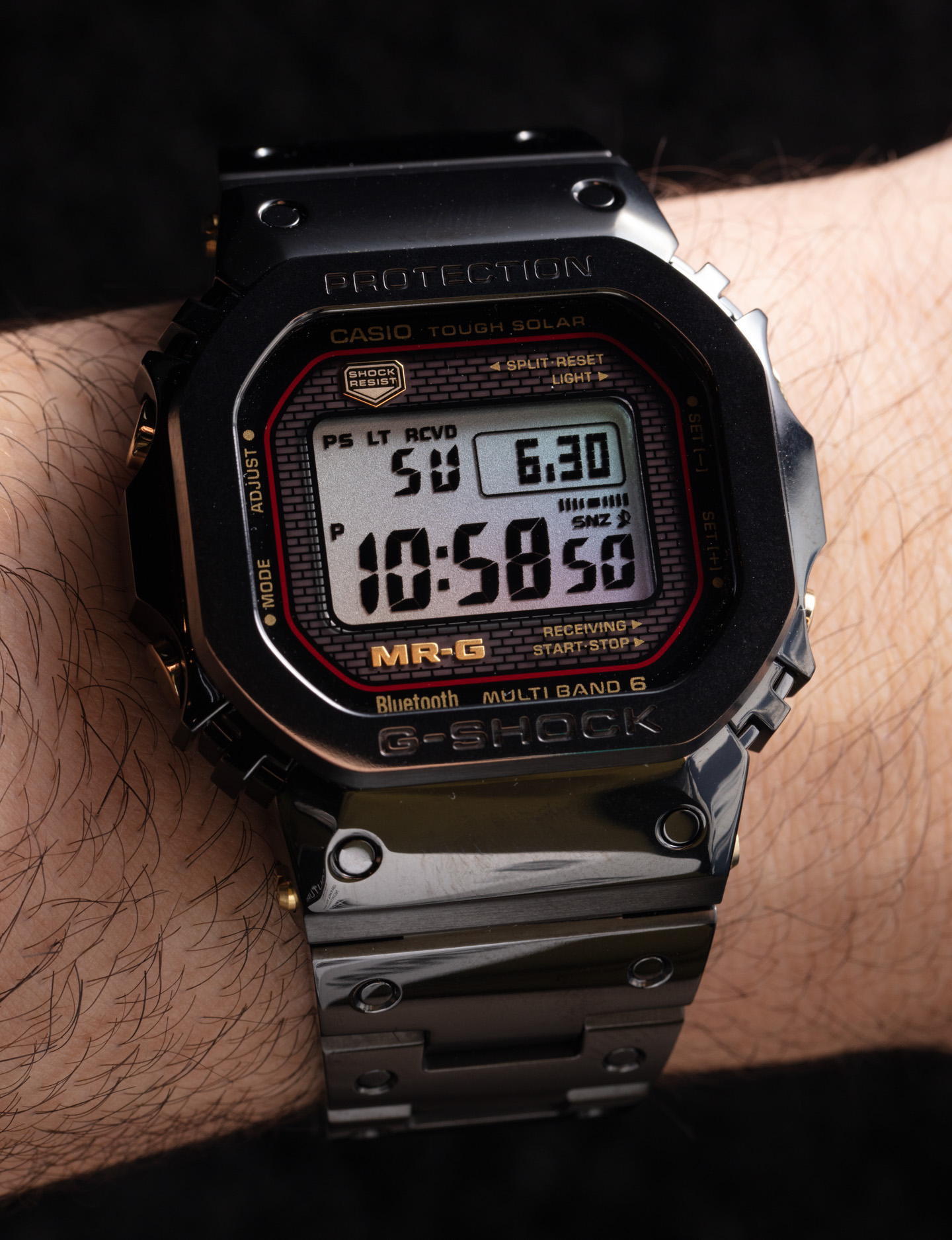
What I would have liked to see at this price level is either an even newer and more sophisticated MIP screen-based module for this case shape or, at the least, a slicker-looking digital LCD screen with a bit more visual pizazz and, perhaps, color. Again, there is nothing lacking or deficient in the module or screen, but since Casio positions the MR-G family as part of its “show-off” watch collection, I wanted to see a glitzy screen and/or module in addition to the admittedly incredible case construction and finishing. In the future, I fully anticipate Casio continuing to release more MIP (memory in pixel) screens (that are already available on some watches) that offer more resolution and visual creative opportunities. Over the screen is, of course, a highly scratch-resistant sapphire crystal. Note the applied “MR-G” plaque on the dial and the signature red ring around the dial, which is often used for G-Shock MR-G products.
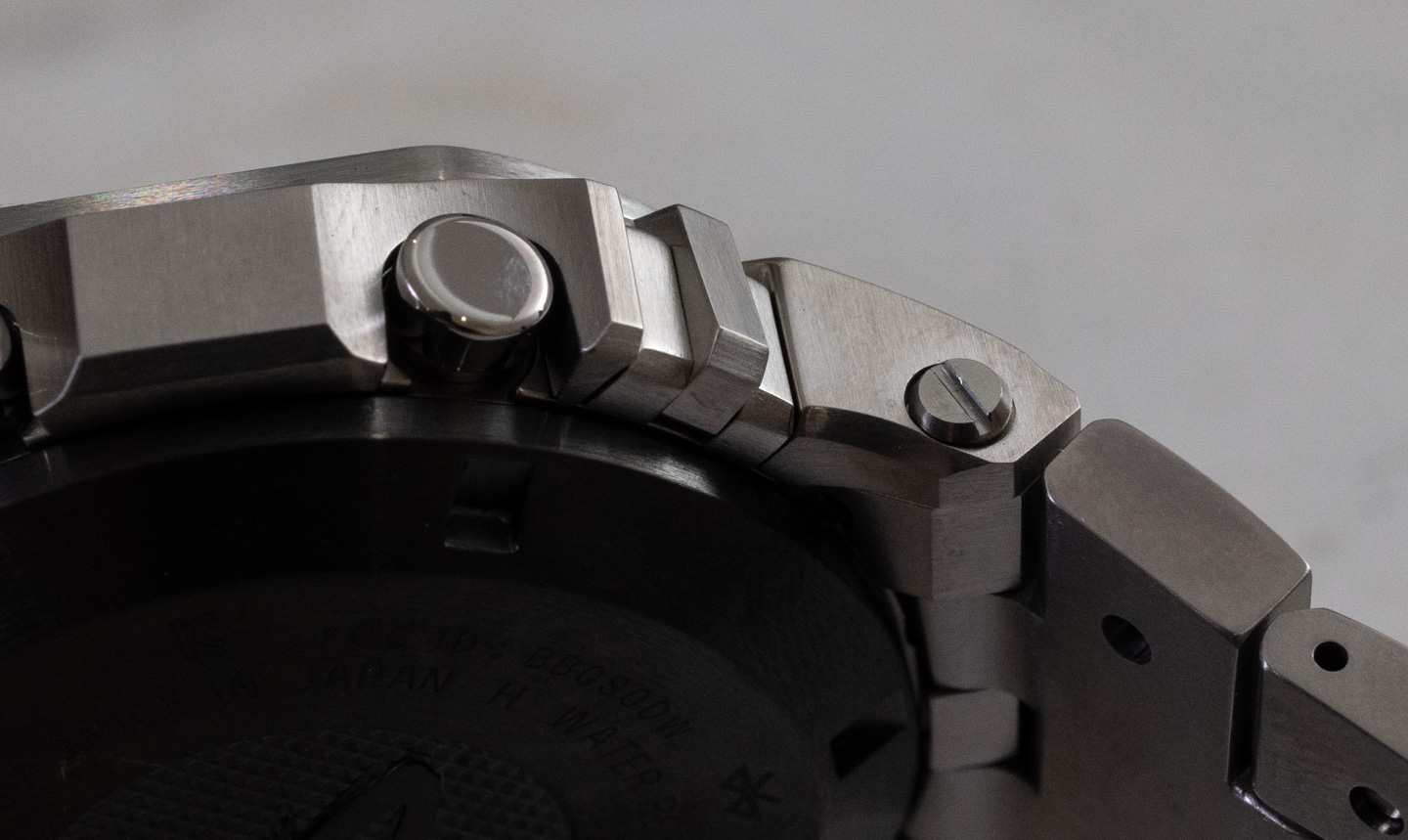
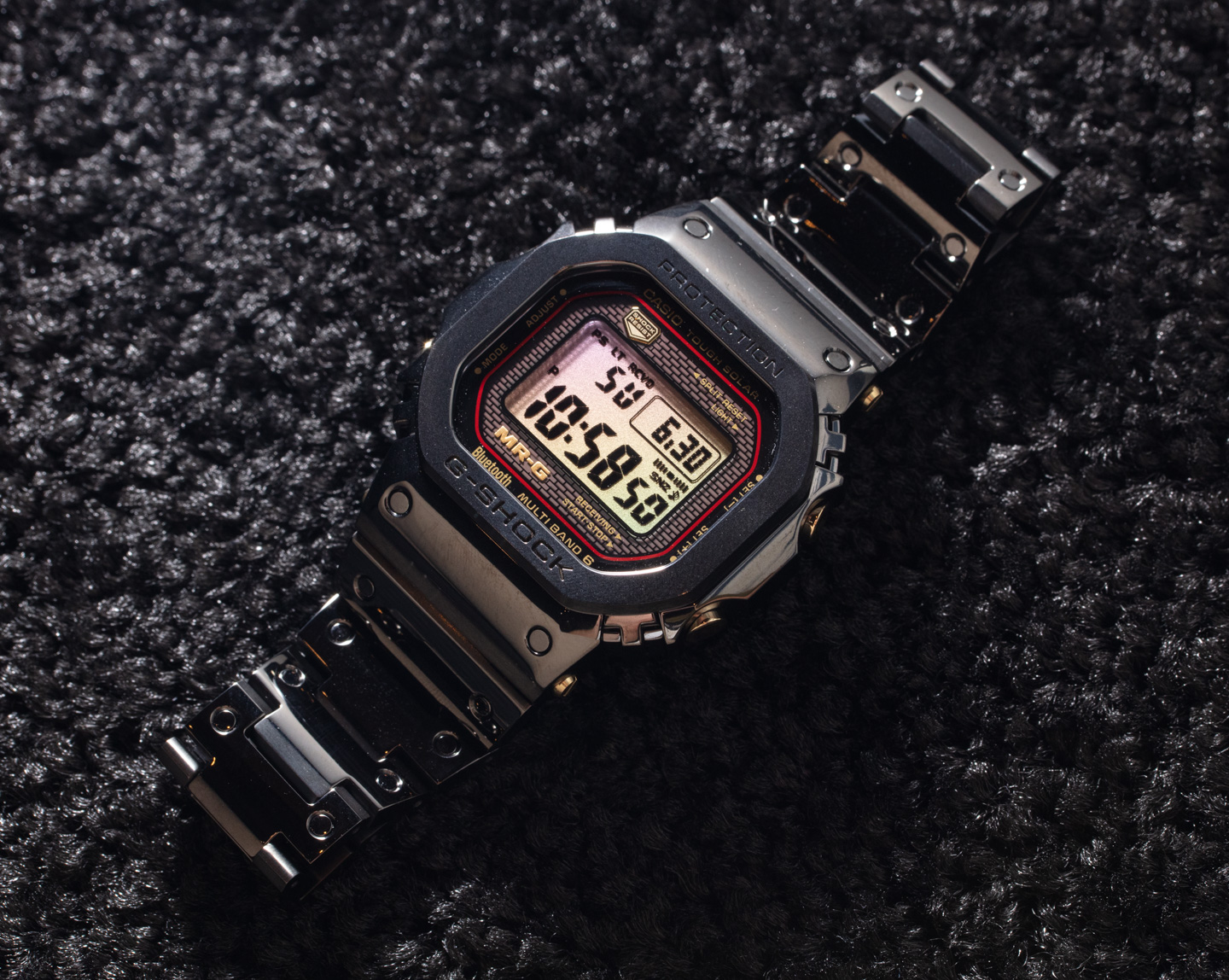
A great way to help introduce the case complexity of the MRG-B5000 case is to compare it with the GMW-B5000. The latter is produced from one solid metal part, whereas the MRG-B5000 case is comprised of 25 individual parts. A similar story of complexity exists for the integrated bracelet. Whereas the GMW-B5000 uses fewer parts that are formed to look more complicated, the MRG-B5000 has bracelet links with individually crafted and inserted rivets, as well as an MR-G-style deployant clasp that offers an optional “lock” that prevents it from opening accidentally (even though it is already push-button activated).
The resulting level of visual detail over the case and bracelet is extremely impressive. Being constructed from all those different parts means that each can be individually finished for a better overall appearance. Casio, of course, needed to ensure that the MRGB5000 watches were serious G-Shocks, which means that despite all the fancy aesthetics, the watches need to be water-resistant to 200 meters and highly shock-resistant. To accomplish shock resistance in the case, under the titanium components are various shock-absorbing materials such as silicone buffer parts and Casio’s proprietary Multi-Guard Structure to further protect the movement inside the case from vibration, shock, and interference.
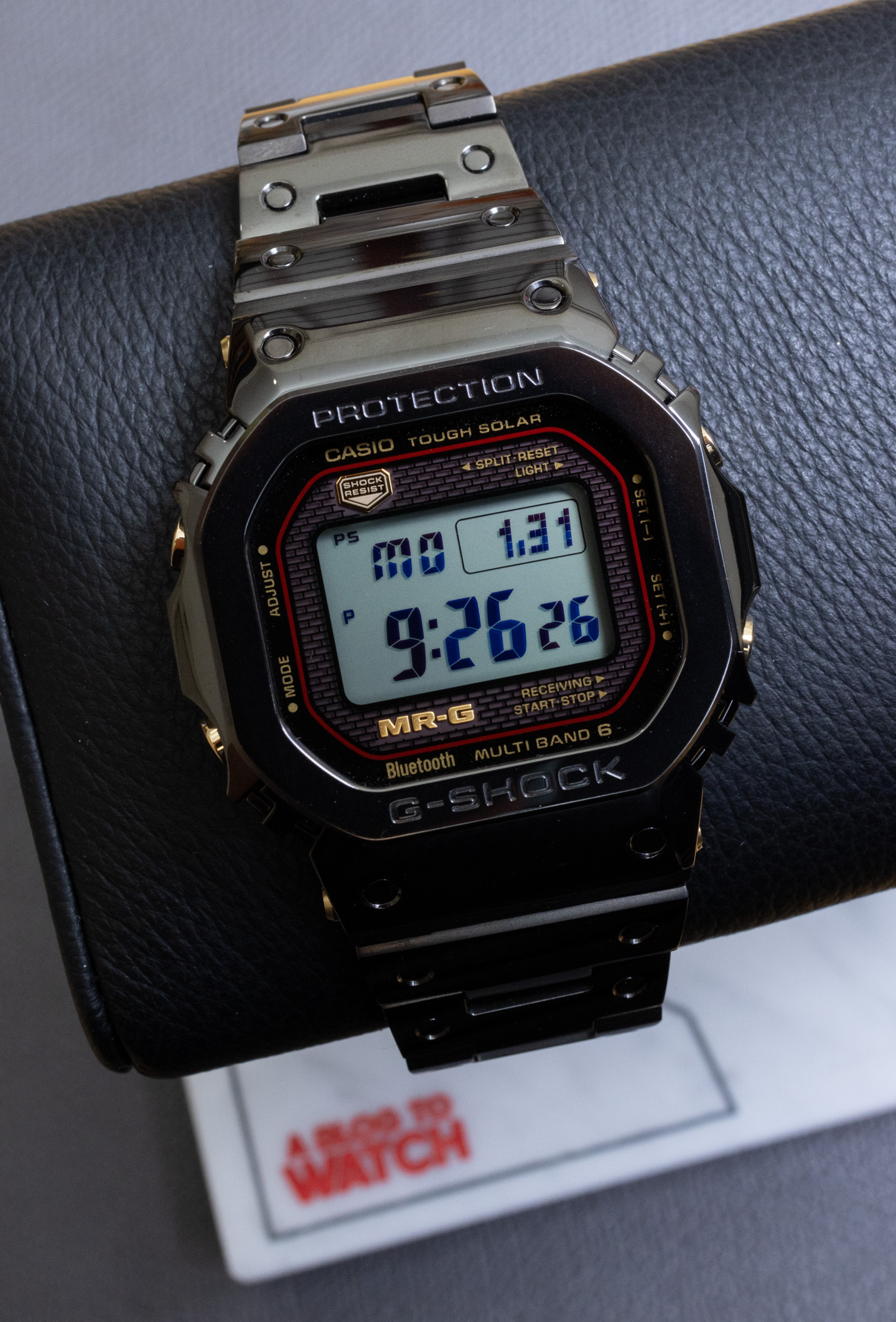
Casio and other Japanese watchmakers love the idea of products that look new for as long as possible. I share this interest entirely and, for that reason, I’m very excited about the special alloys that Casio chose as a material basis for the MRG-B5000 watches. The reason the two watches pictured in this article are a different price is the DLC-coating, which the black-colored MRGB5000B-1A has, is an additional set of steps and increases the manufacturing cost. Typically, DLC-coated (diamond-like carbon) watches are much more scratch-resistant than uncoated metals. In this case, I think that while the black version might technically be more scratch-resistant, both versions of the MRGB5000 have high native scratch resistance, even though they are produced from titanium (a softer metal). Why is that?
It’s because Casio uses three exotic metal alloys to produce the G-Shock MRGB5000 watch cases and bracelets. First, Casio uses a cobalt-chromium alloy material called Cobarion for the MRG-B5000’s bezel. This alloy is said to be four times more scratch-resistant than titanium, and it polishes with a platinum-like finish. For looks and durability, Casio made the right choice with Cobarion for the bezel material. I imagine that Cobarion isn’t the lightest alloy, so the rest of the MRGB5000 case and bracelet are produced from two forms of titanium. The primary titanium alloy used for most of the MRGB5000 bracelet is known as DAT55G and it is said to be three times as scratch resistant as standard titanium. Casio then uses a titanium alloy known as TI64 for smaller parts of the MRG-B5000 case such as the pushers and caseback, said to be twice as scratch resistant as standard titanium.
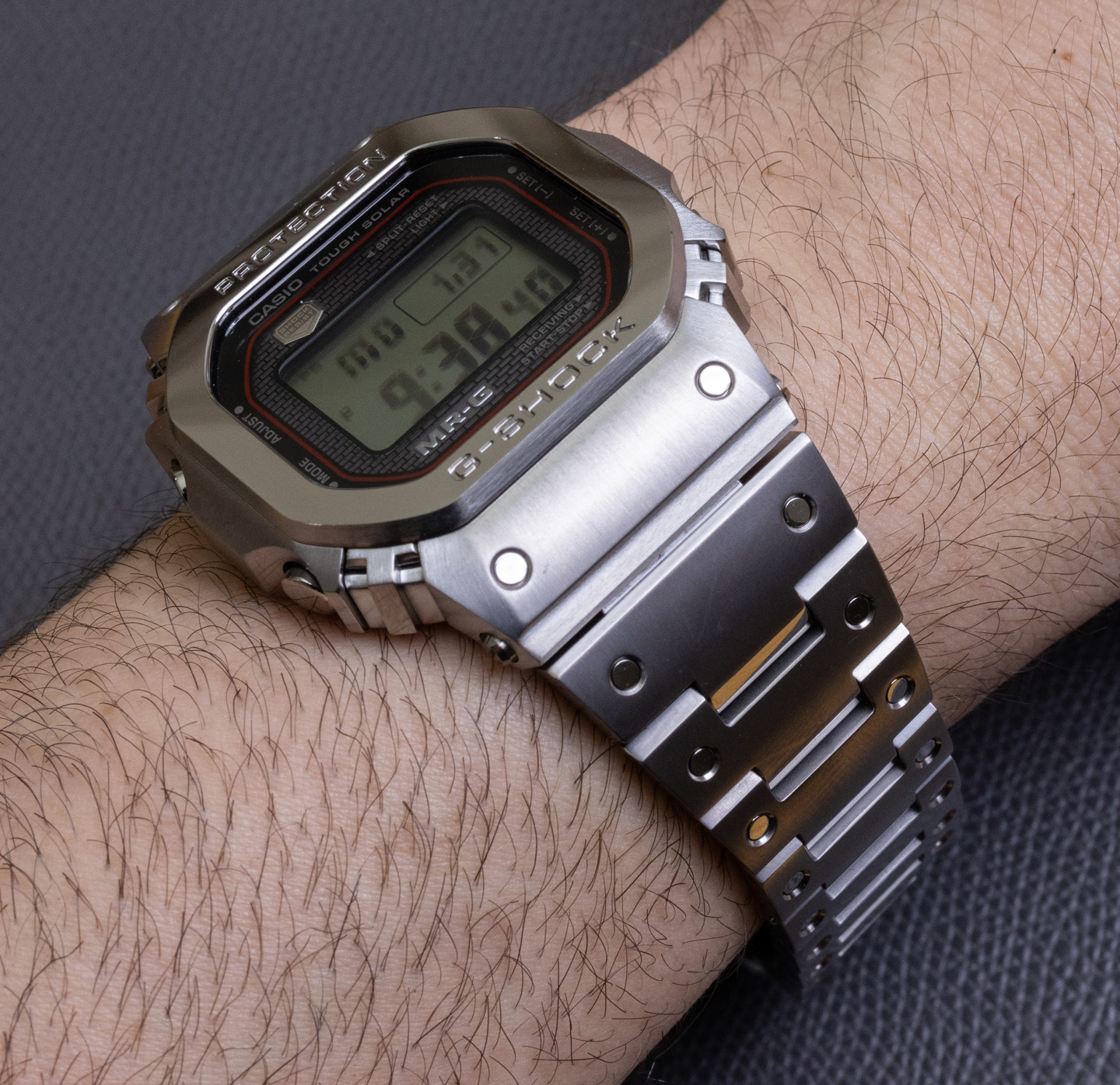
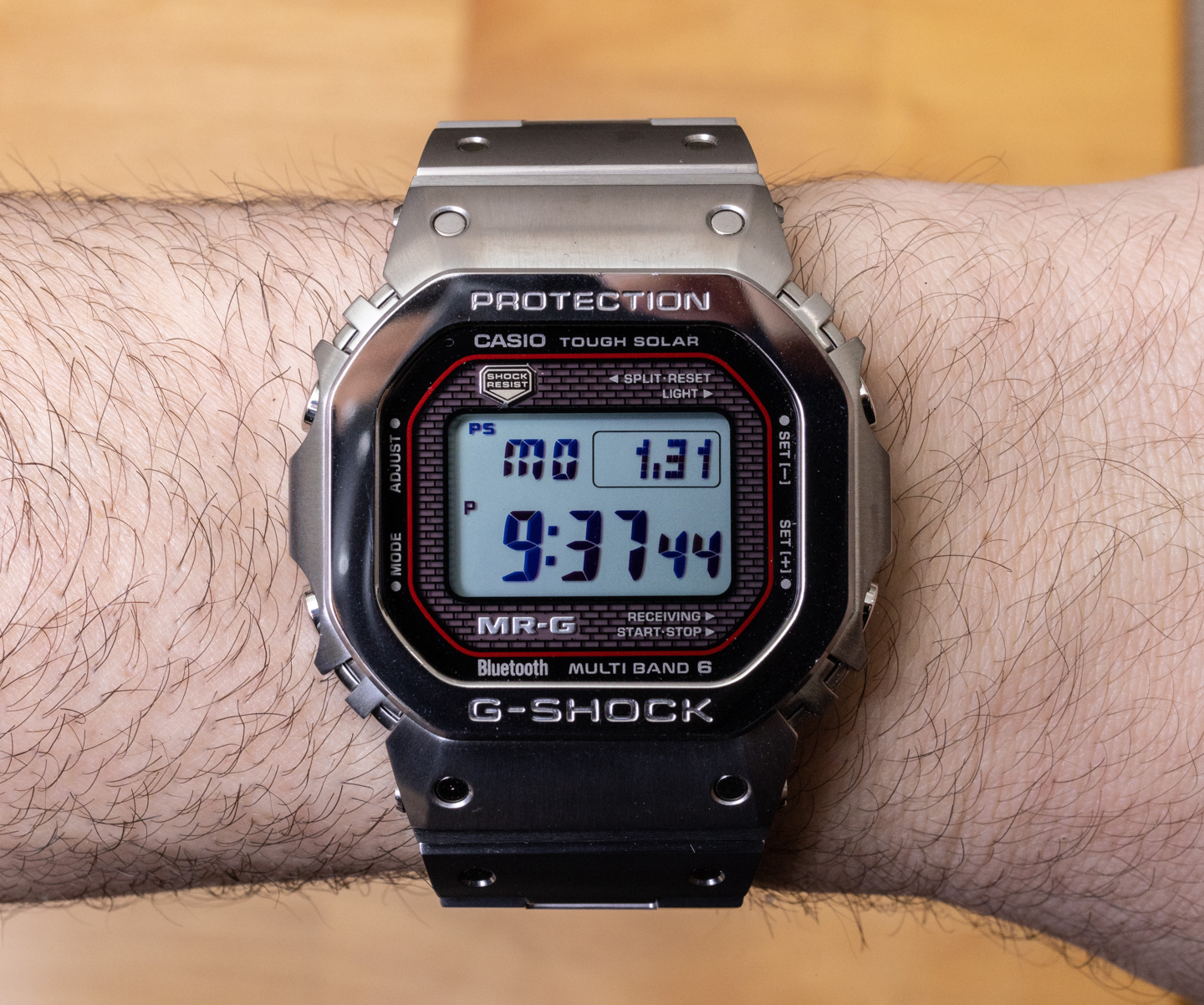
It is hard to appreciate just how nicely the MRG-B5000 watches look and play with the light until you handle one in person. Casio does such a nice job showcasing the standard GMWB5000 watches in its marketing photography that it can be difficult to imagine that the MRGB5000 pieces look better. The truth is that both related model families are beautiful, and one is positioned as a premium consumer product while the other is a serious enthusiast-grade timepiece that showcases what Casio can do when its product team wishes to go the extra mile and offer a product that most mainstream consumers would not be able to wrap their minds around. We, however, aren’t mainstream consumers, and the virtues of this new “mega-digital” luxury watch family from Casio are self-evident.
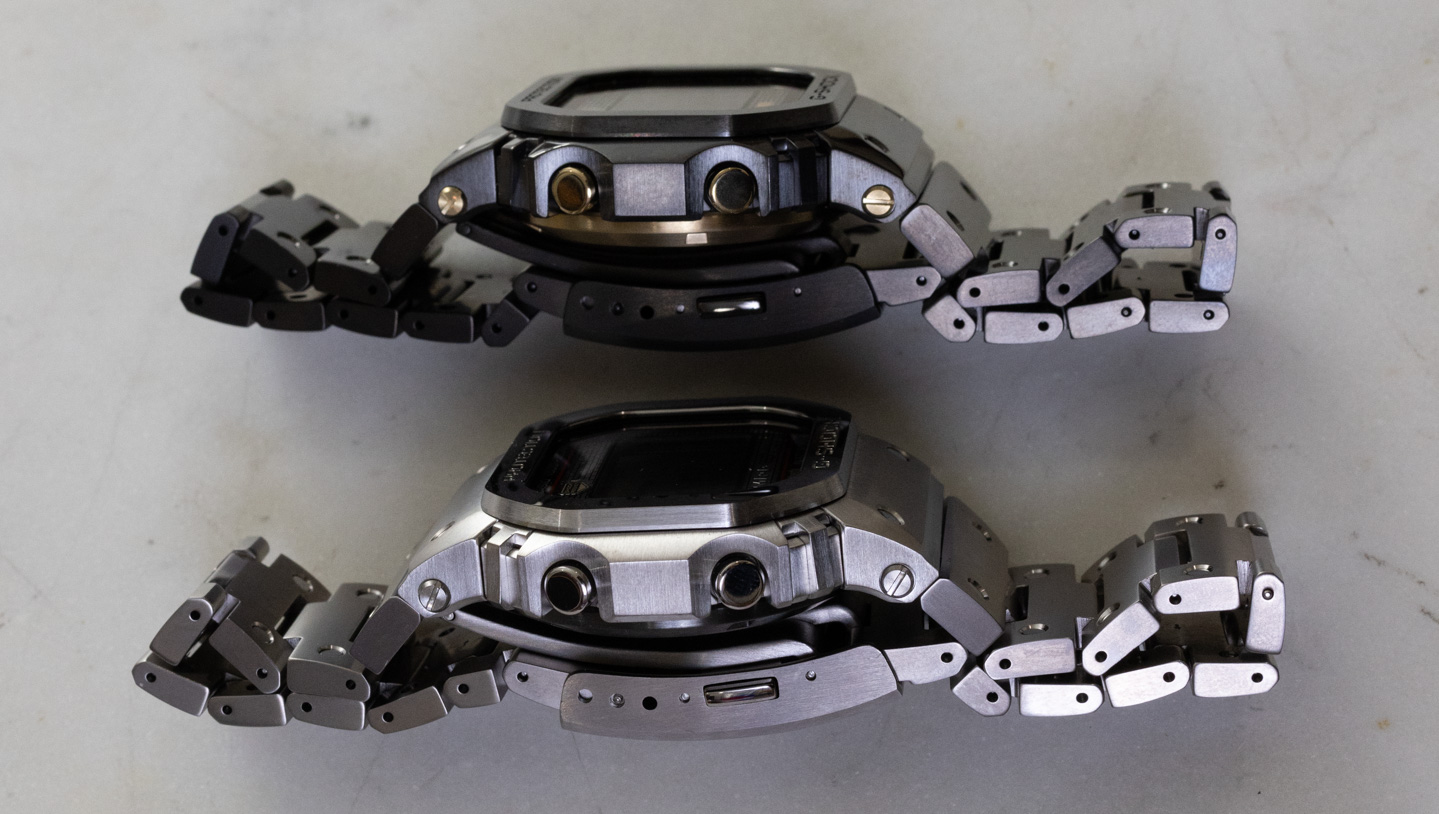 Mind you, the MRG-B5000 is hardly the most expensive digital watch in this family that Casio has created. If you really want to go nuts, then check out the solid gold Casio G-Shock G-D5000-9JR, which costs $70,000 (aBlogtoWatch hands-on here). Most people who want to spend big on a cool Casio will find the MRG-B5000 very much to their liking, in my opinion. The watches are compelling for daily enjoyment and are far less artistically polarizing than some of the more artisanal-style MR-G watches that we typically expect from Casio G-Shock each year. I also feel that enthusiasts of traditional mechanical watches will appreciate the detailed construction of the MRGB5000 case and its parts. This is one of the most discreet luxury watches of the year, and it fluidly appeals to people wanting to blend in where high-end watches are not appropriate, as well as for those who want to make a unique statement with their luxury timepiece in socially elevated environments.
Mind you, the MRG-B5000 is hardly the most expensive digital watch in this family that Casio has created. If you really want to go nuts, then check out the solid gold Casio G-Shock G-D5000-9JR, which costs $70,000 (aBlogtoWatch hands-on here). Most people who want to spend big on a cool Casio will find the MRG-B5000 very much to their liking, in my opinion. The watches are compelling for daily enjoyment and are far less artistically polarizing than some of the more artisanal-style MR-G watches that we typically expect from Casio G-Shock each year. I also feel that enthusiasts of traditional mechanical watches will appreciate the detailed construction of the MRGB5000 case and its parts. This is one of the most discreet luxury watches of the year, and it fluidly appeals to people wanting to blend in where high-end watches are not appropriate, as well as for those who want to make a unique statement with their luxury timepiece in socially elevated environments.
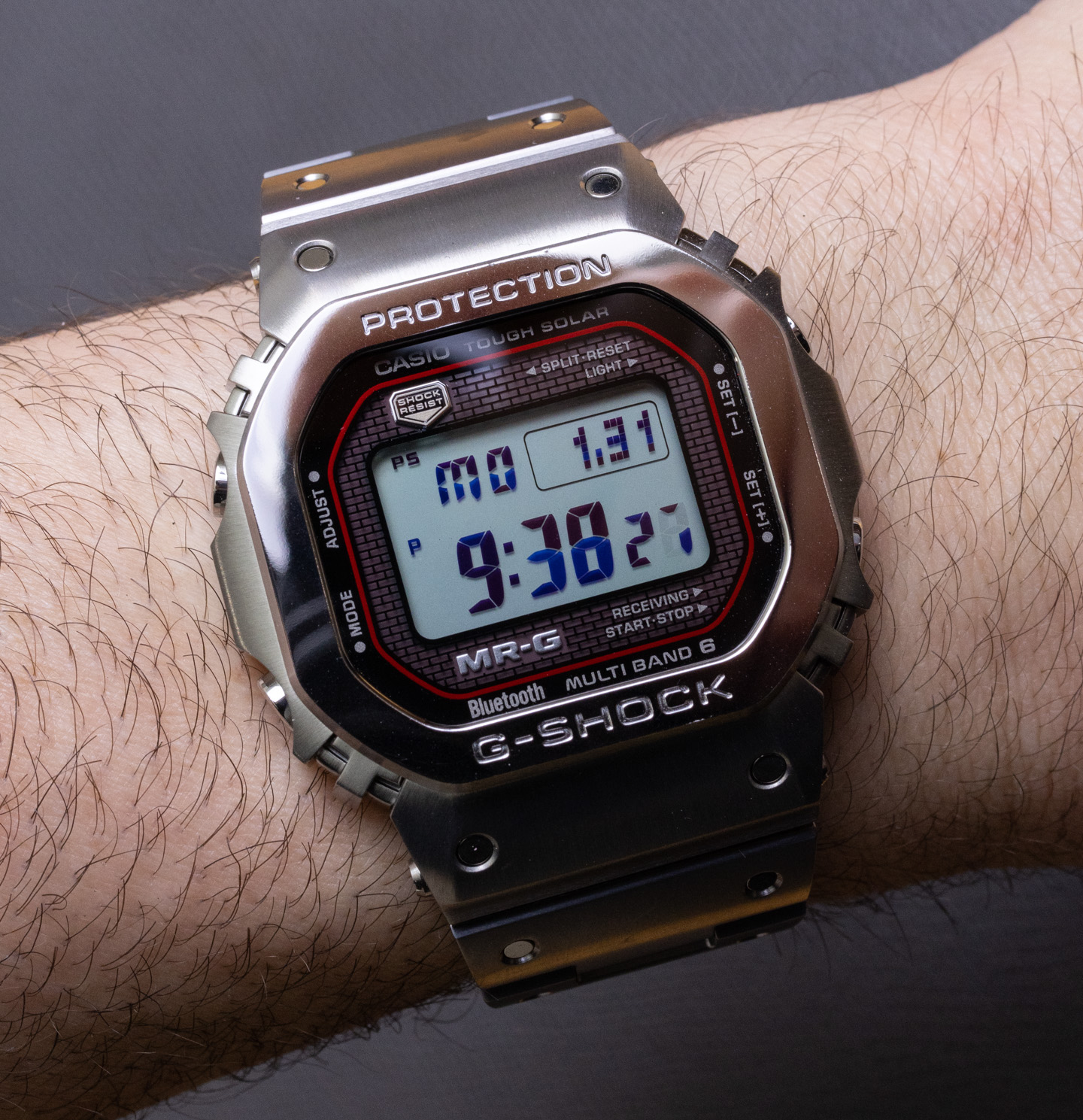
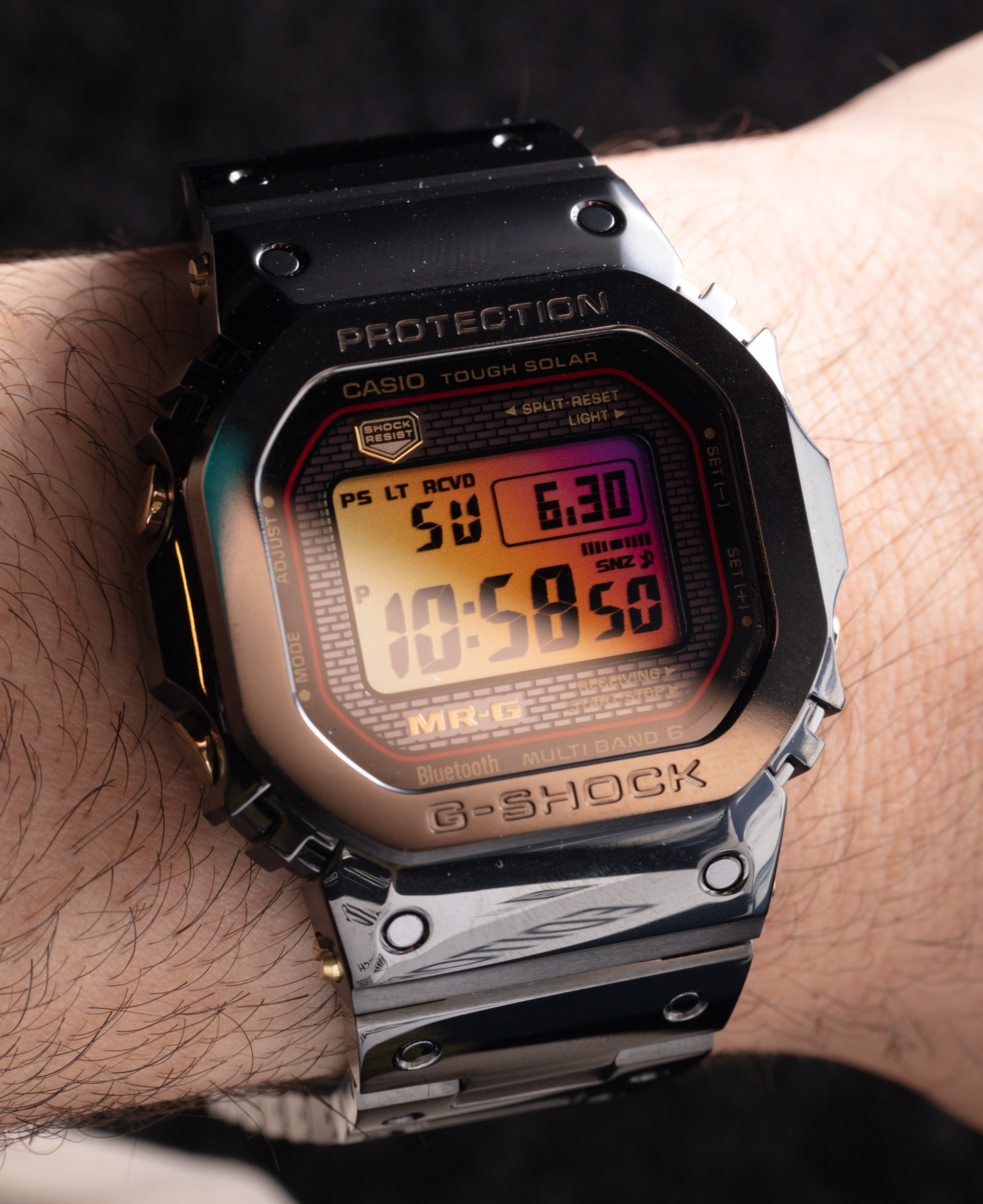
Metal G-Shock watches have always been a funny thing because the original concept of G-Shock was to use resins and other polymers to create highly shock-resistant, lightweight workhorse watches. Metal is a material that can be polished and tends to last longer than resins, so it makes sense that Casio’s team naturally wanted to combine the allure of metal with the benefit of a G-Shock. For that reason, MR-G and other metal watches have lived alongside standard G-Shock timepieces for many years. The grail for Casio engineers is to have metal-cased G-Shock watches that are not only as lightweight and durable as standard G-Shock timepieces but also offer additional benefits such as long-lasting wear resistance and more luxurious looks. That is very much what something like the MRG-B5000 models offer in a G-Shock wearing experience and why these products can make so much sense. Price for the Casio G-Shock MRG-B5000 reference MRGB5000D-1A in “silver” is $3,500 USD, and the reference MRGB5000B-1A is $4,000 USD. Learn more at Casio G-Shock website here.

